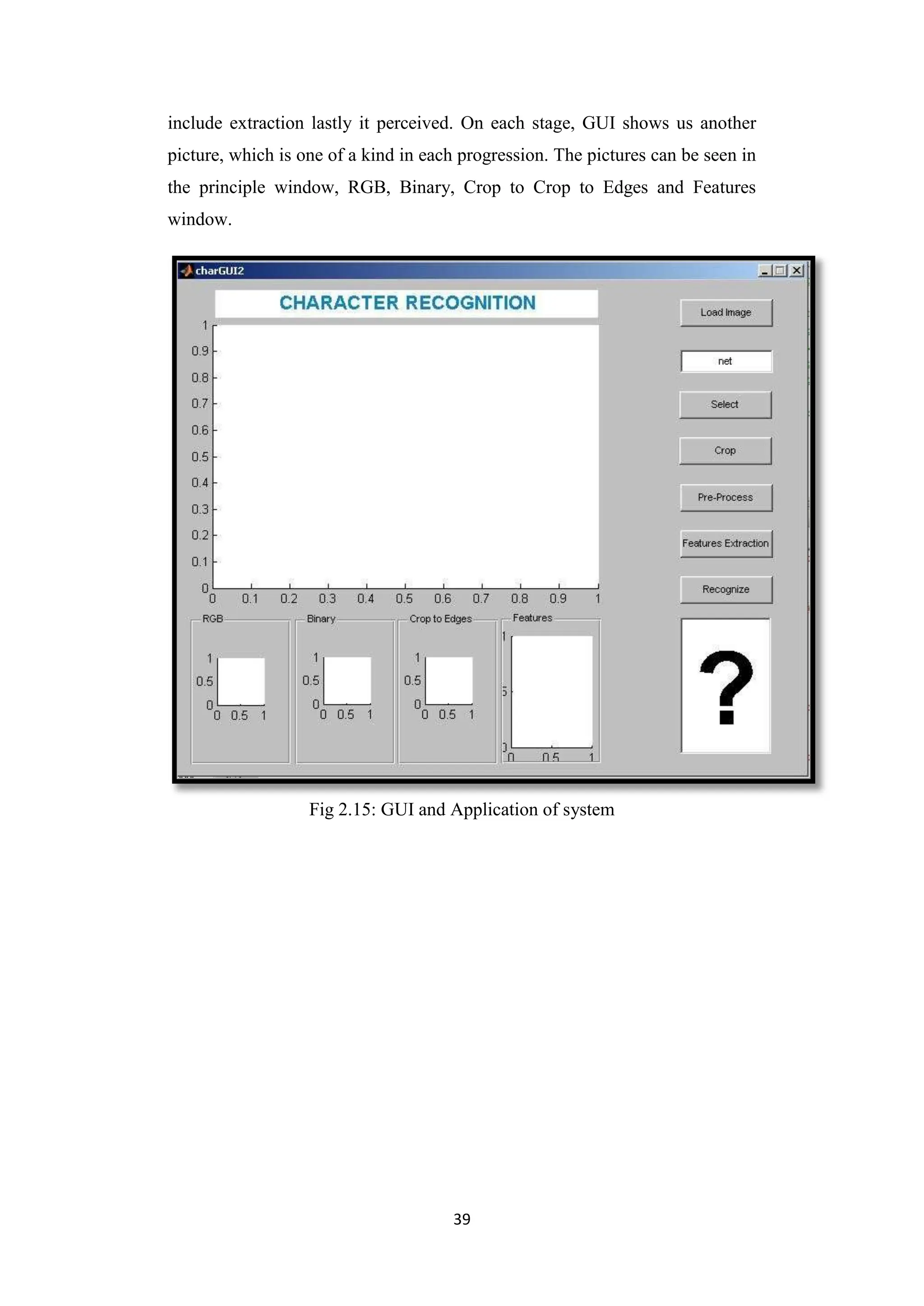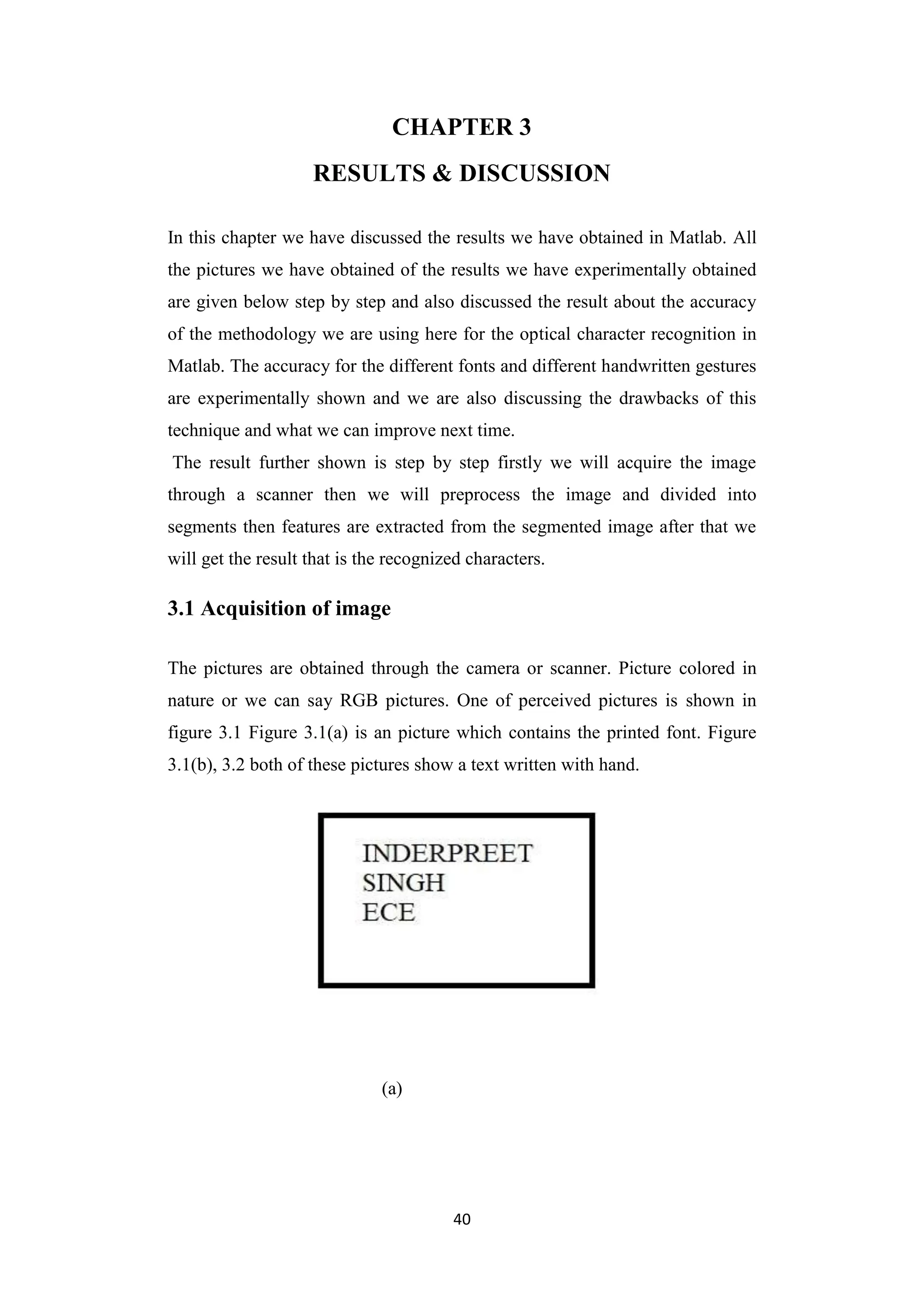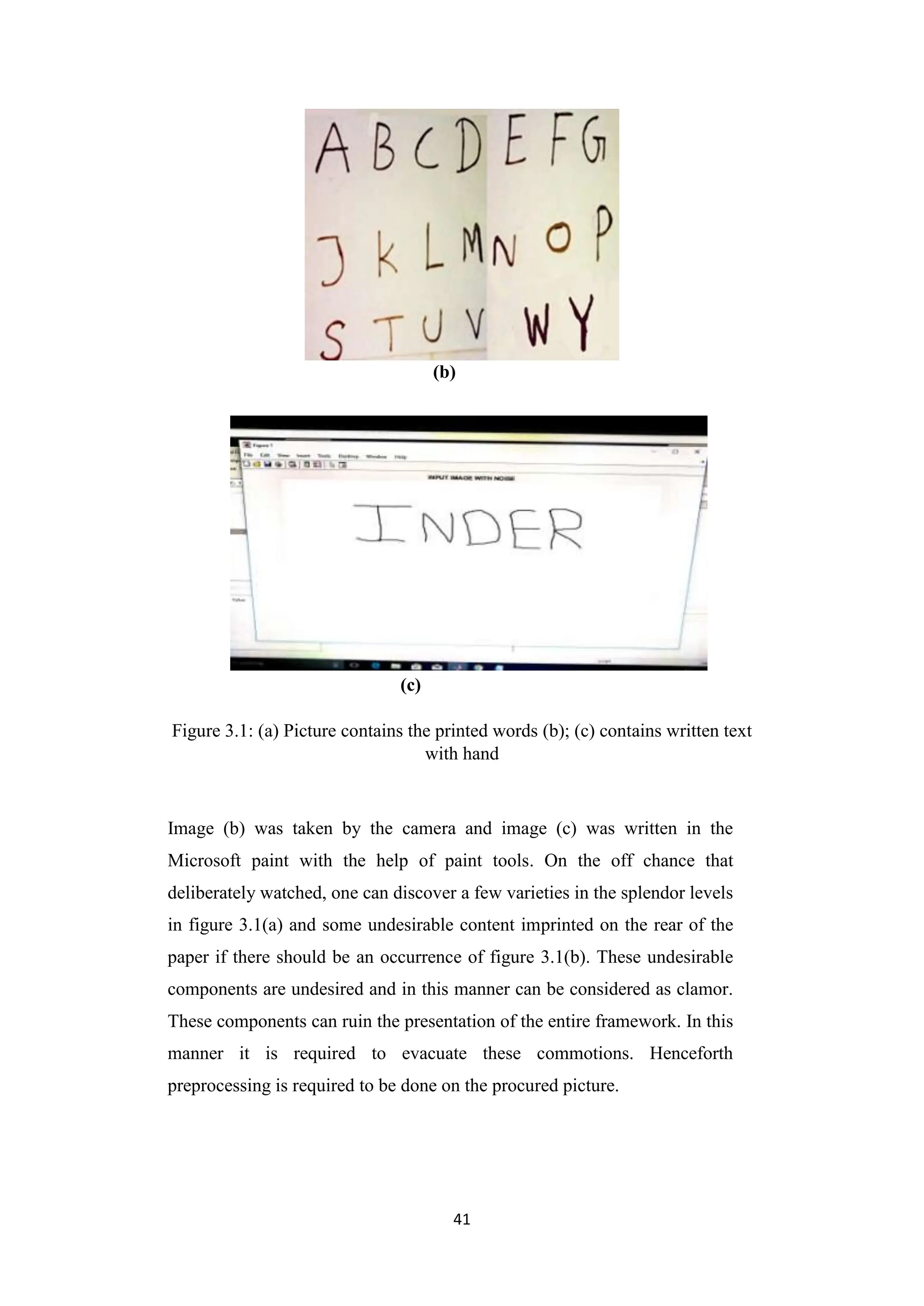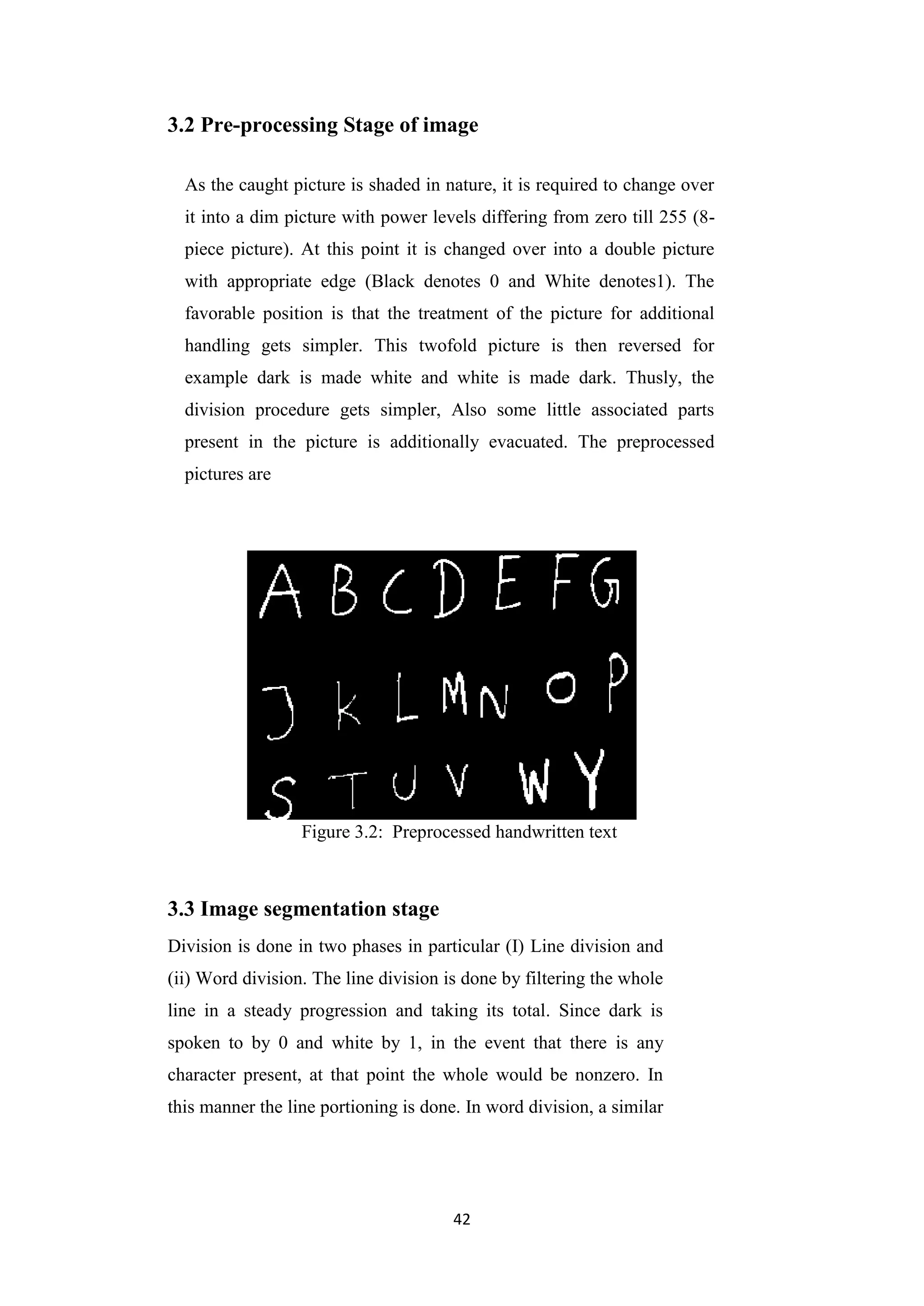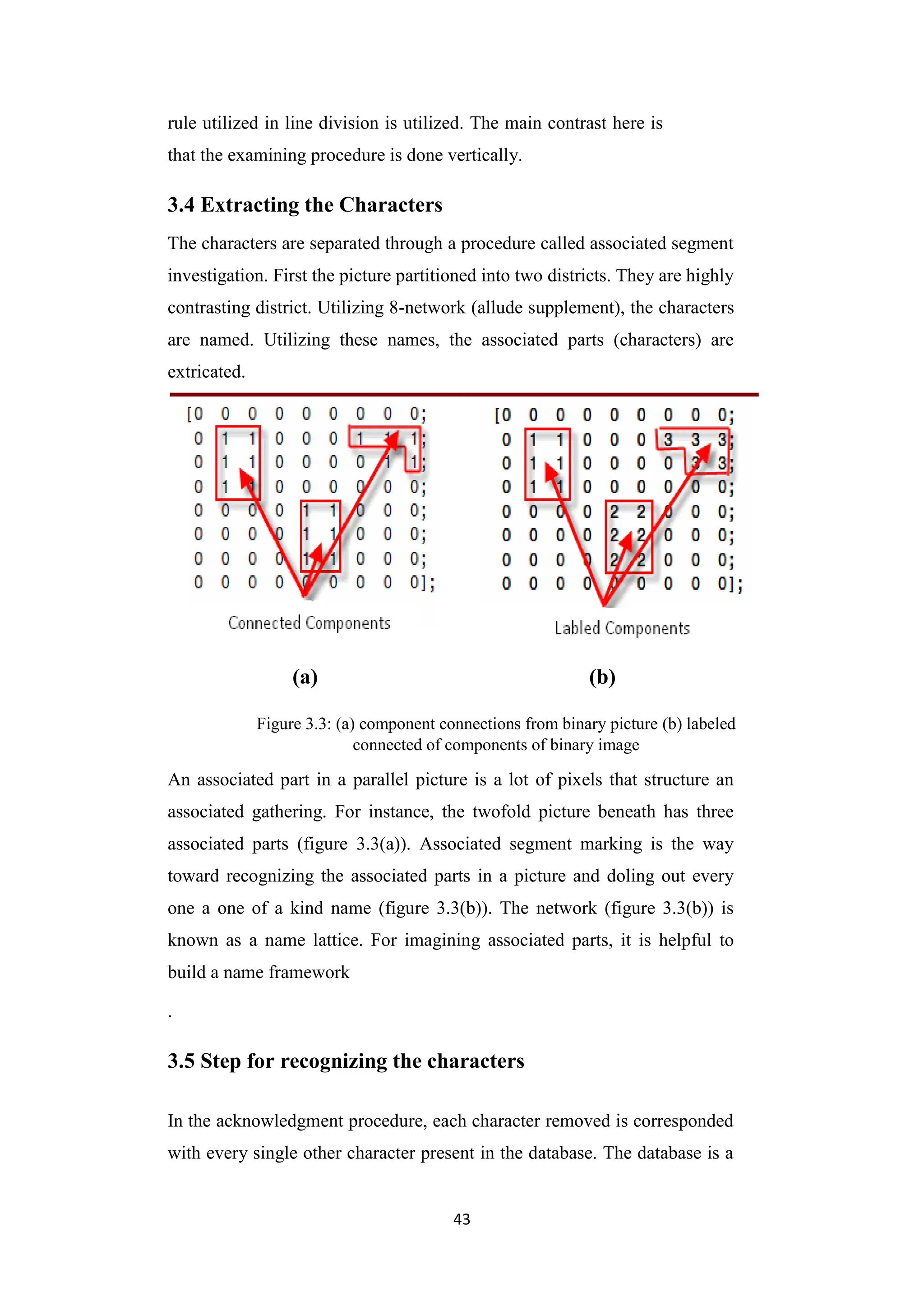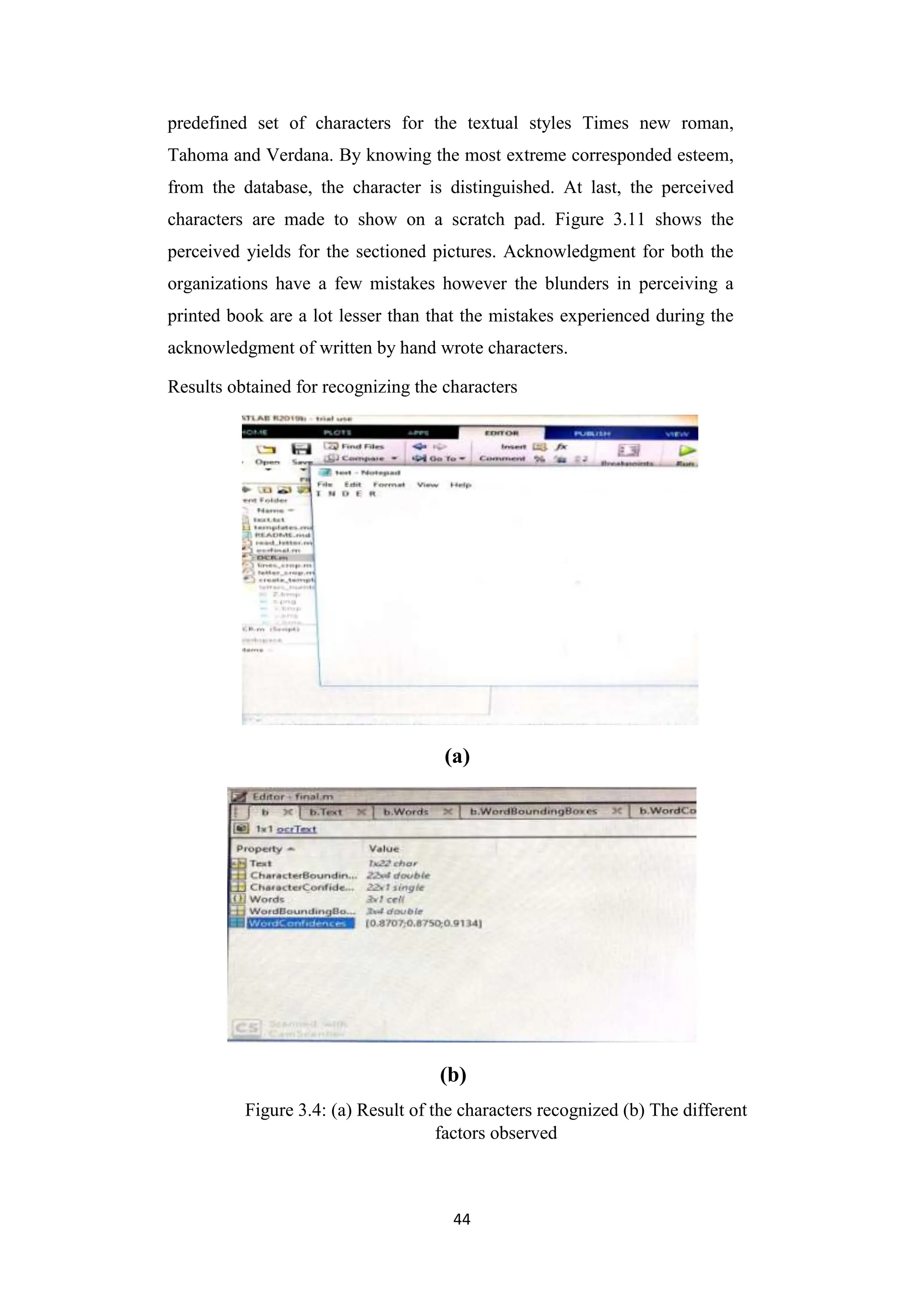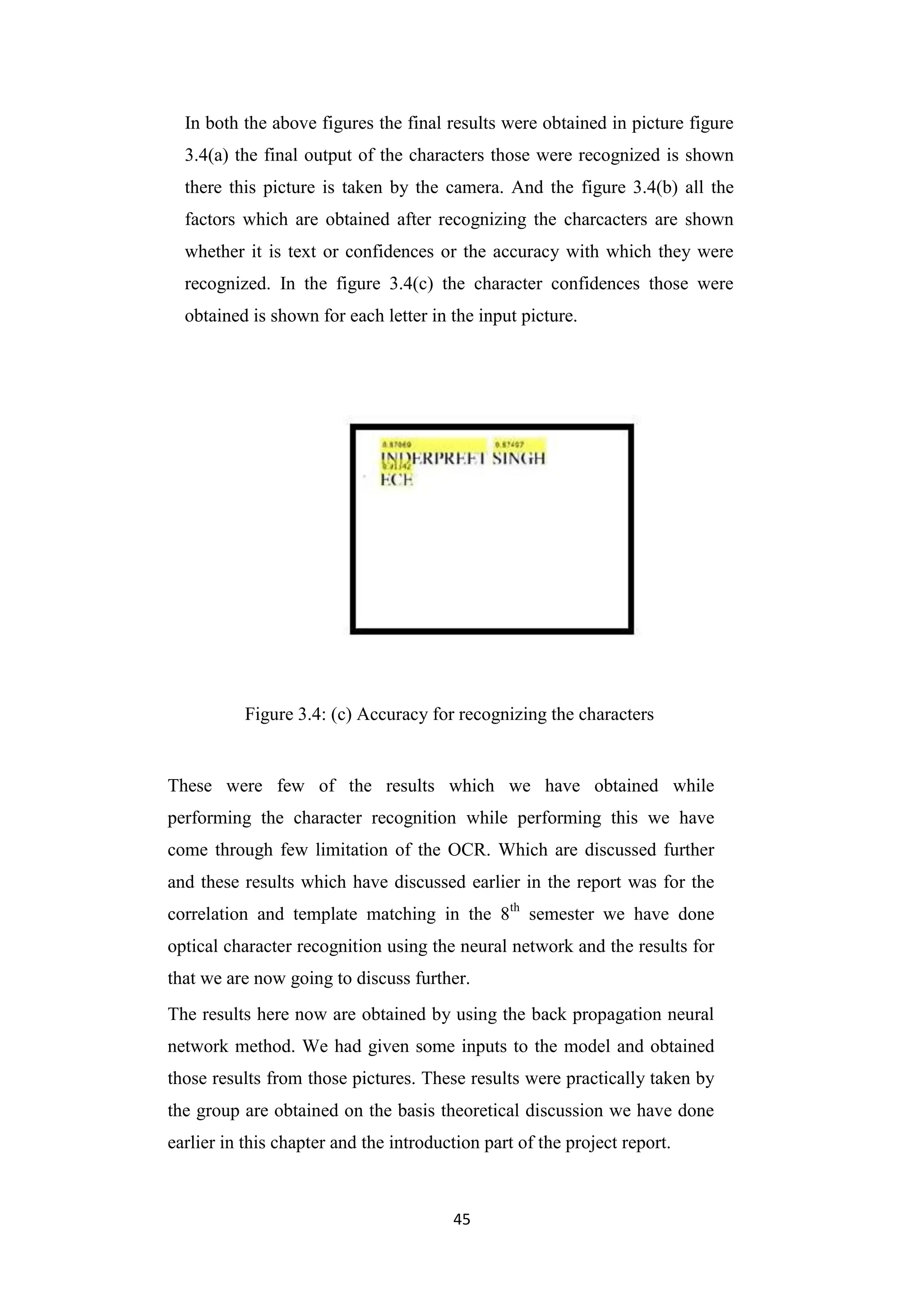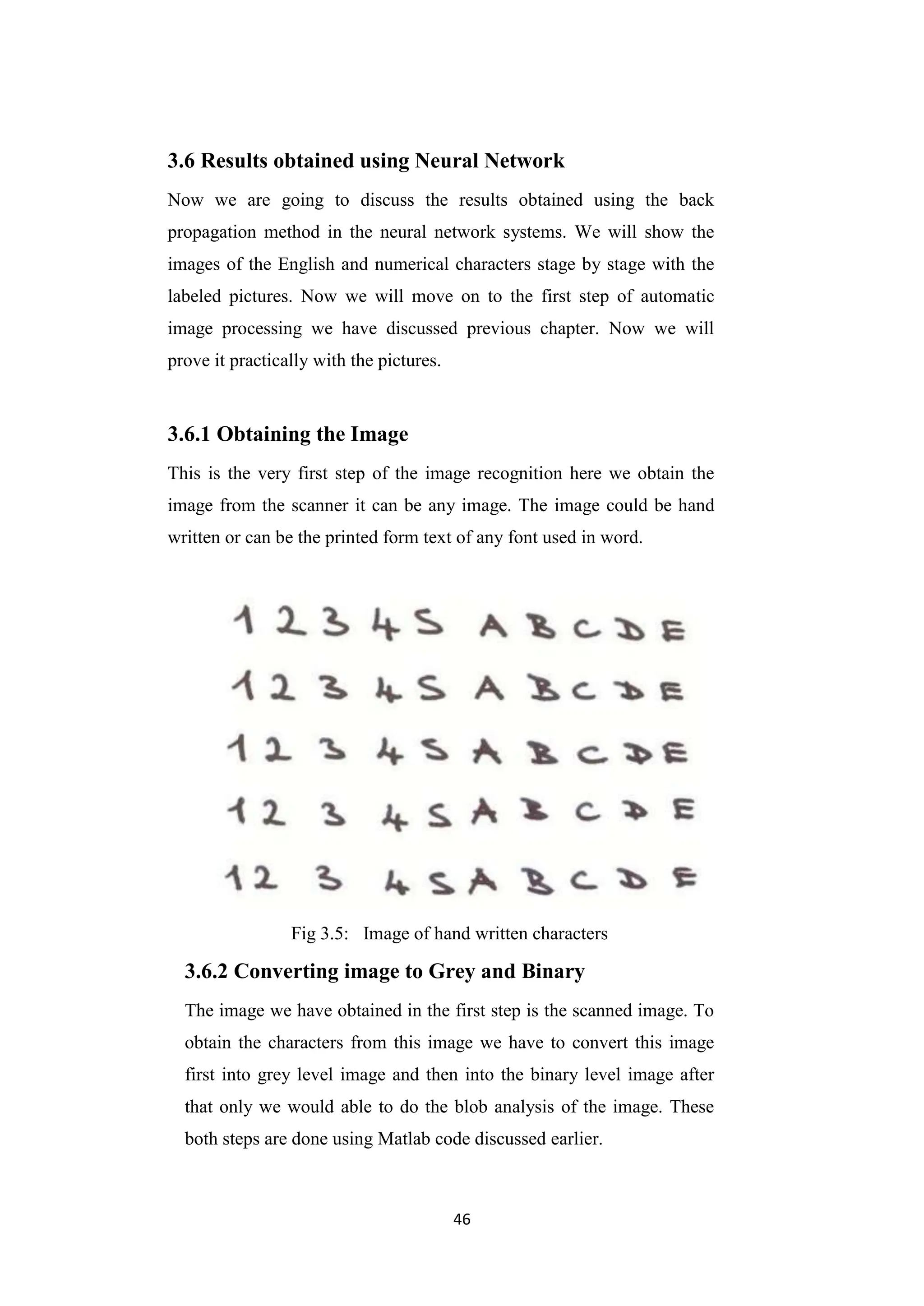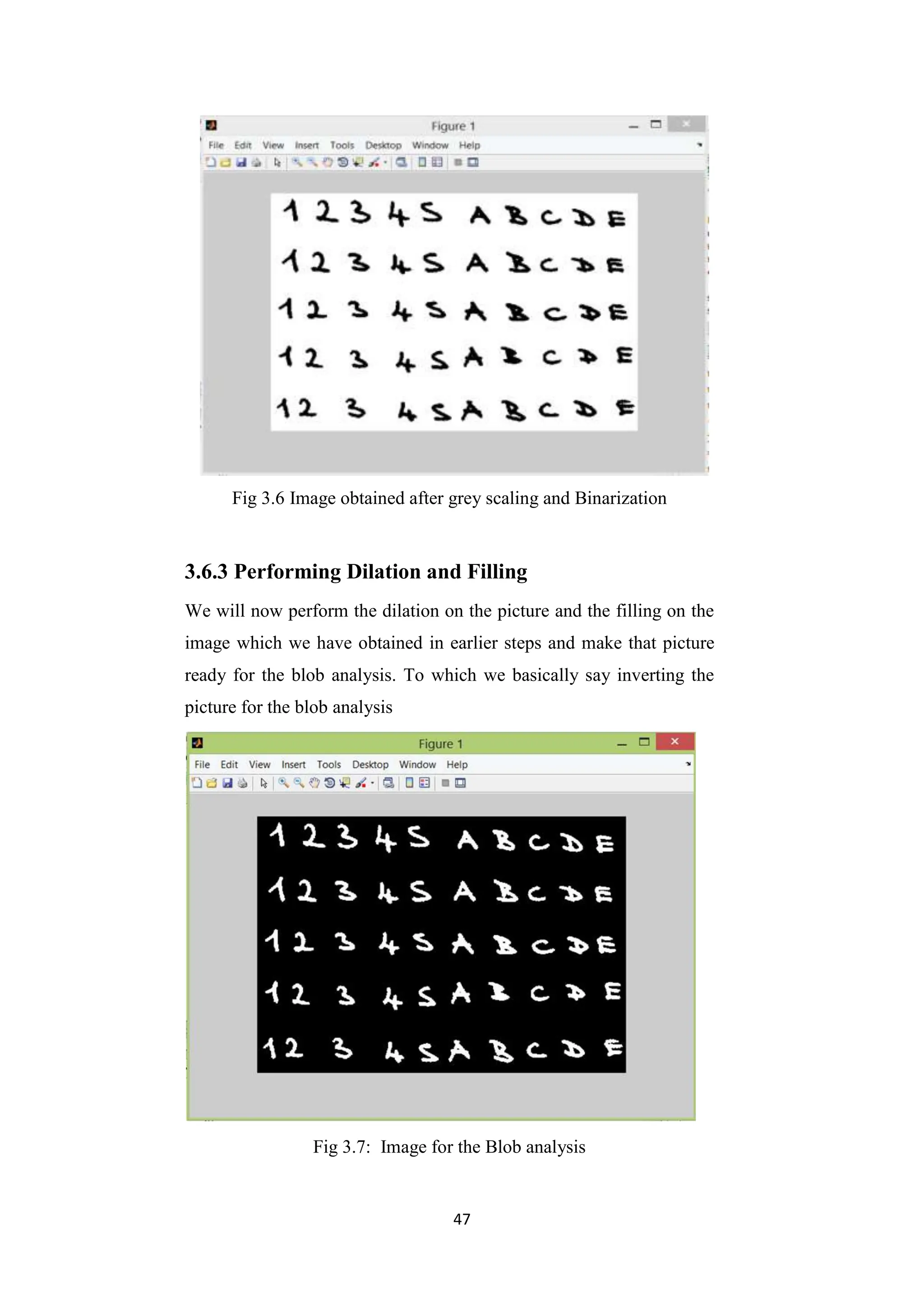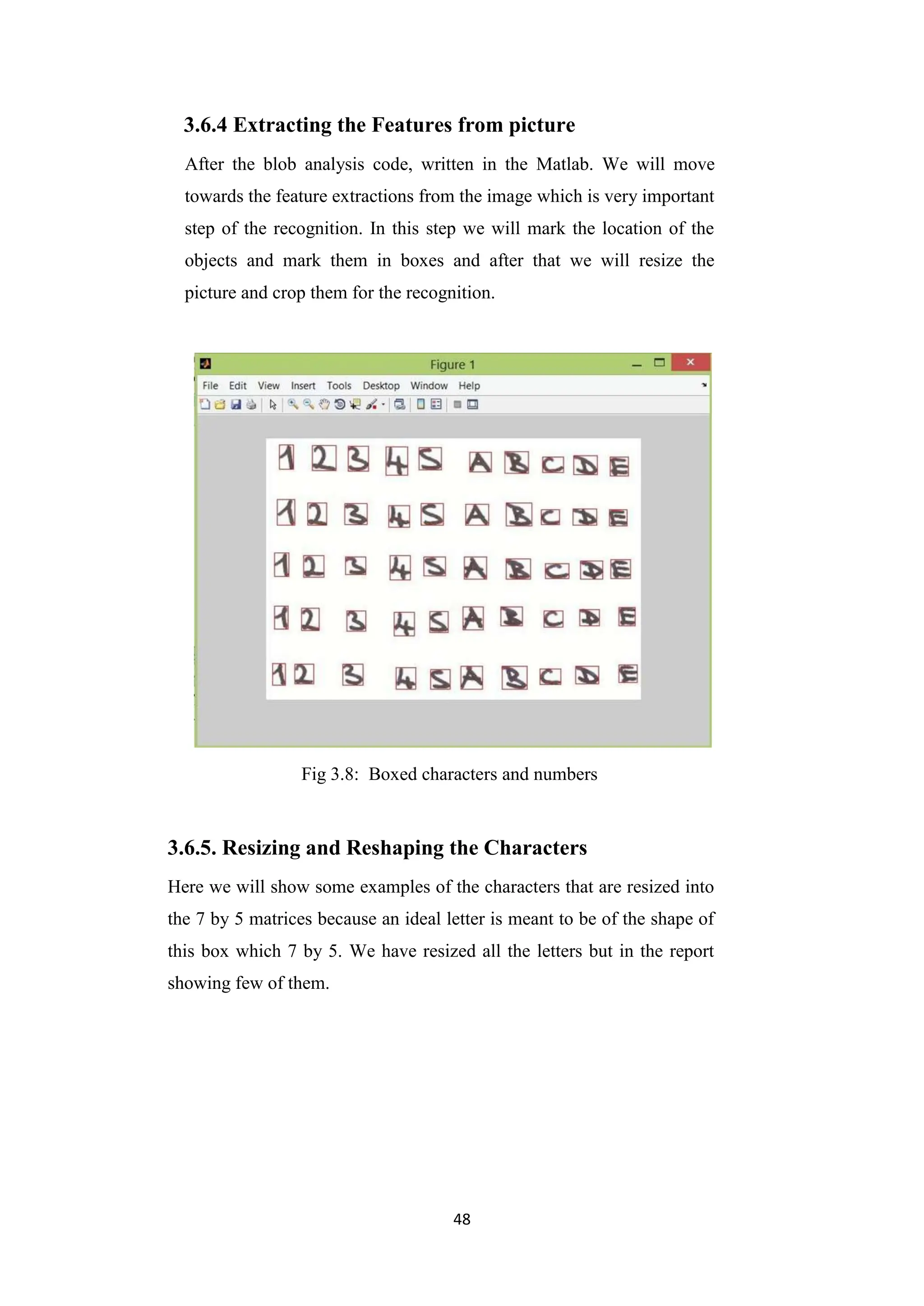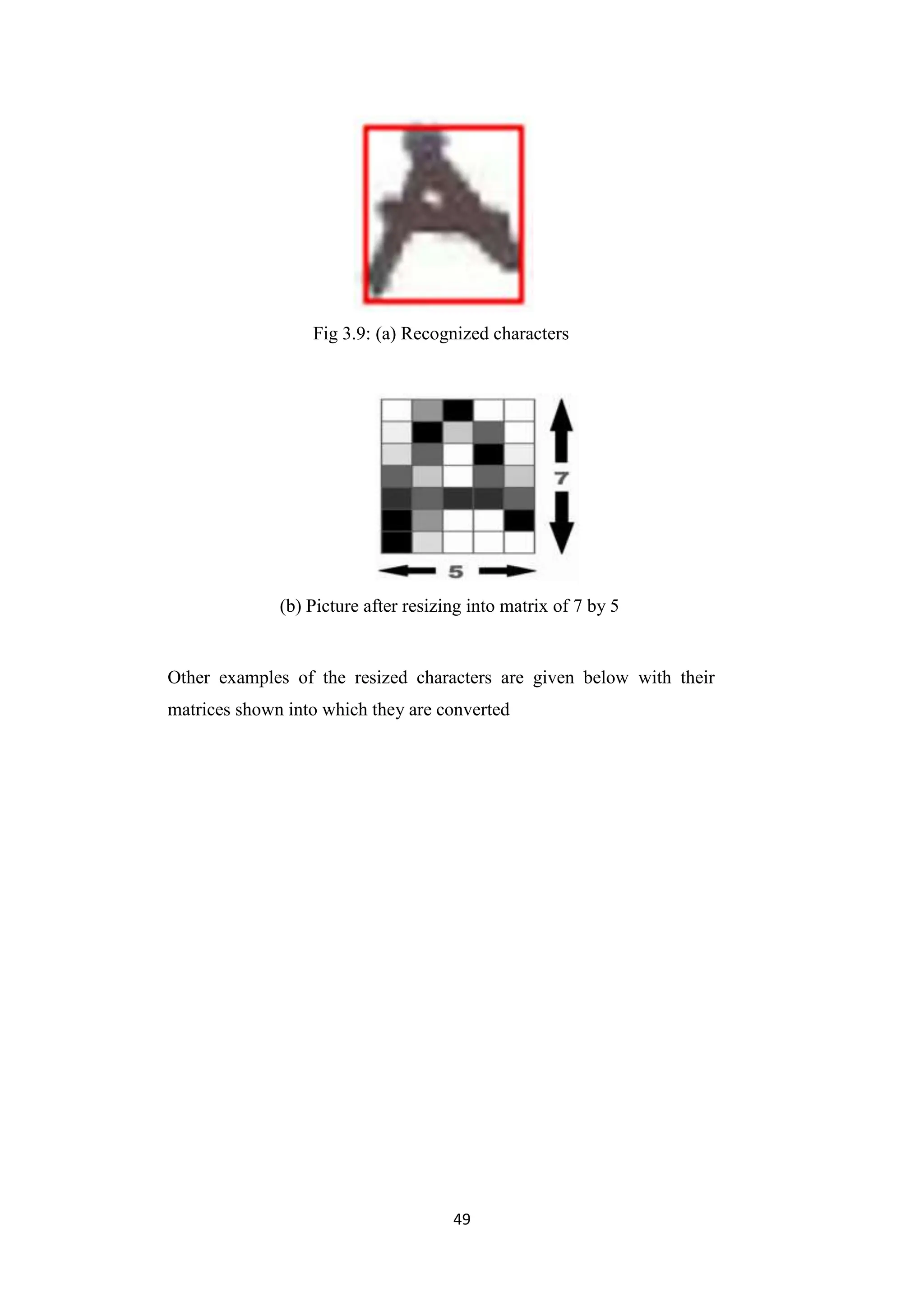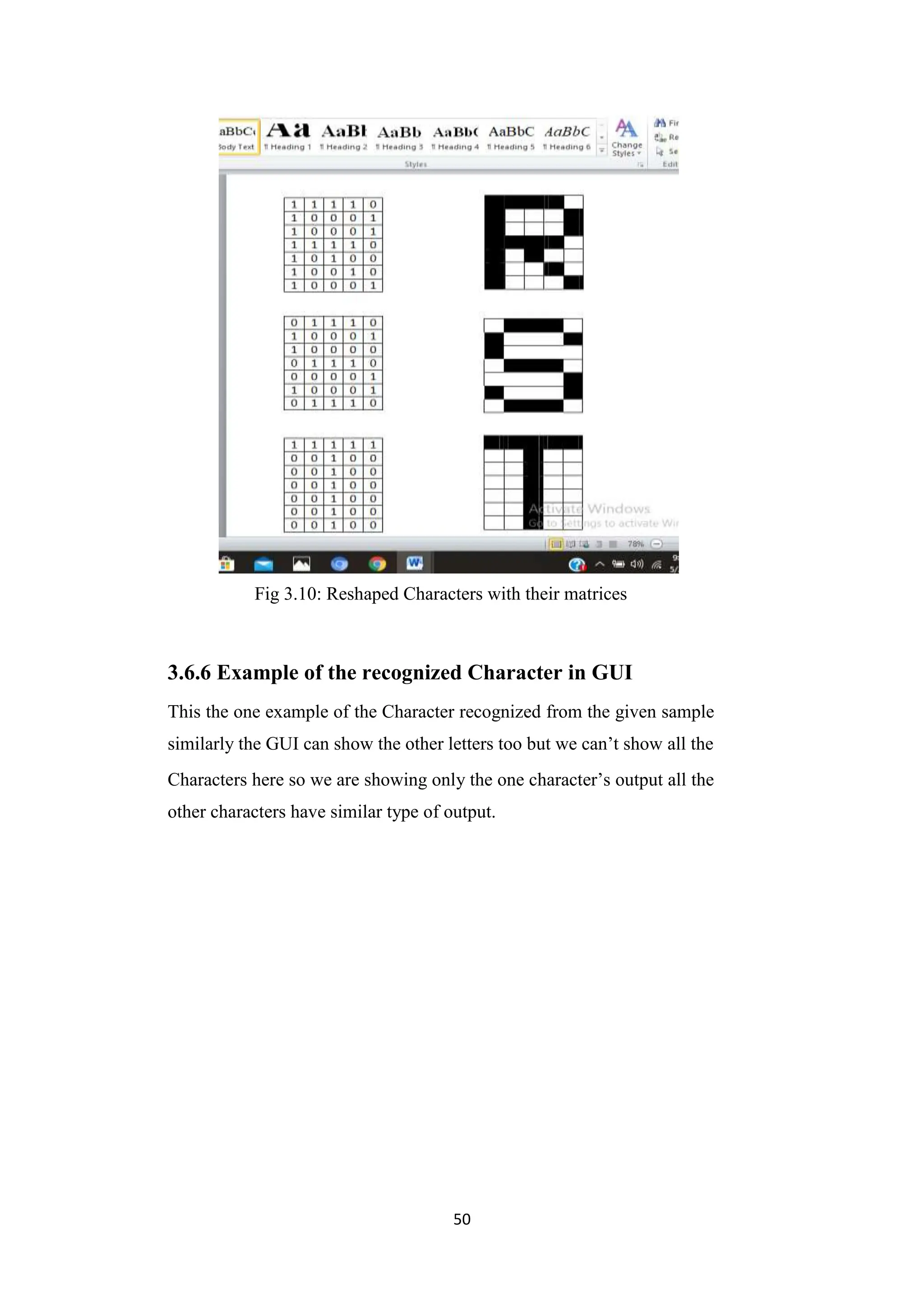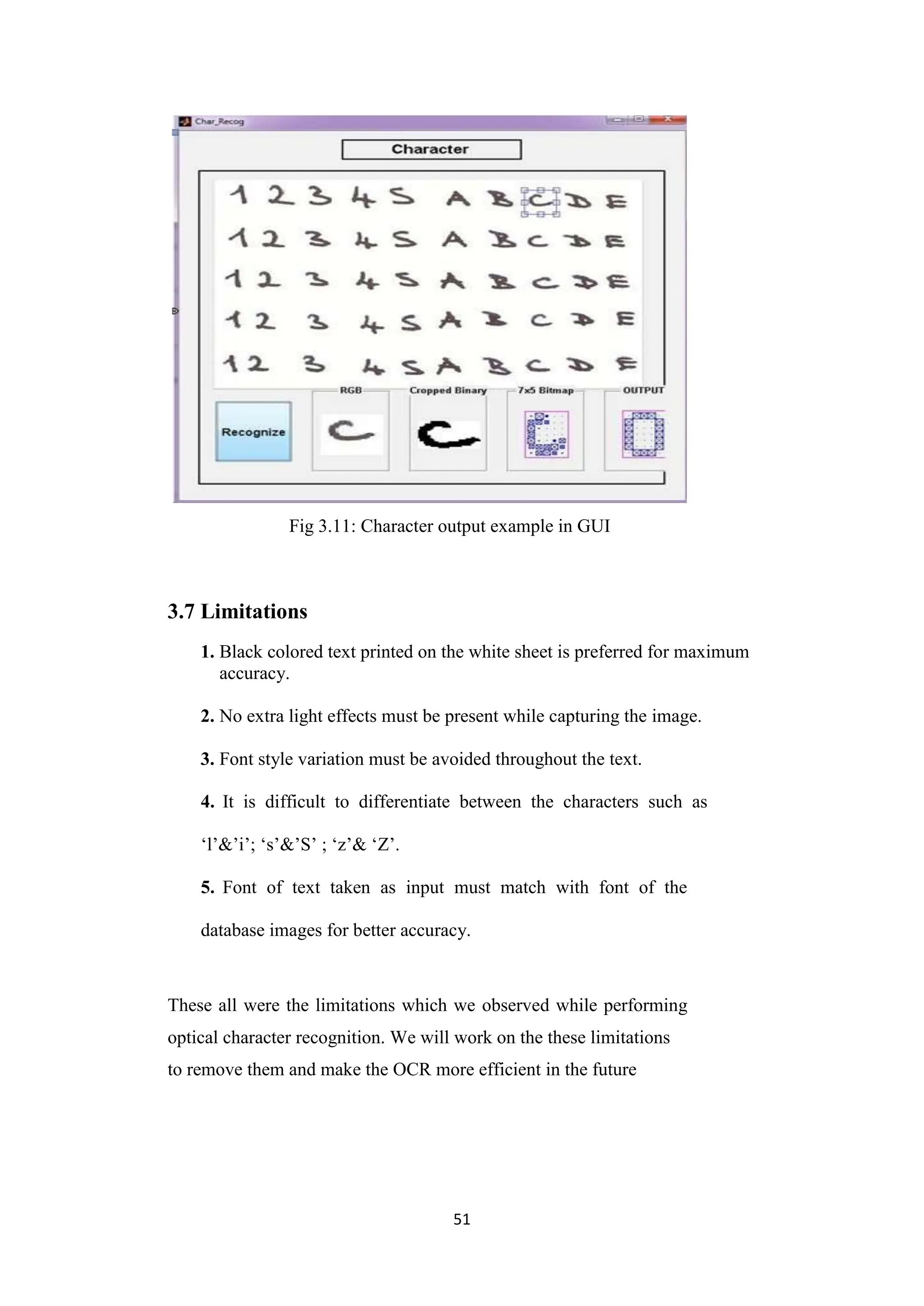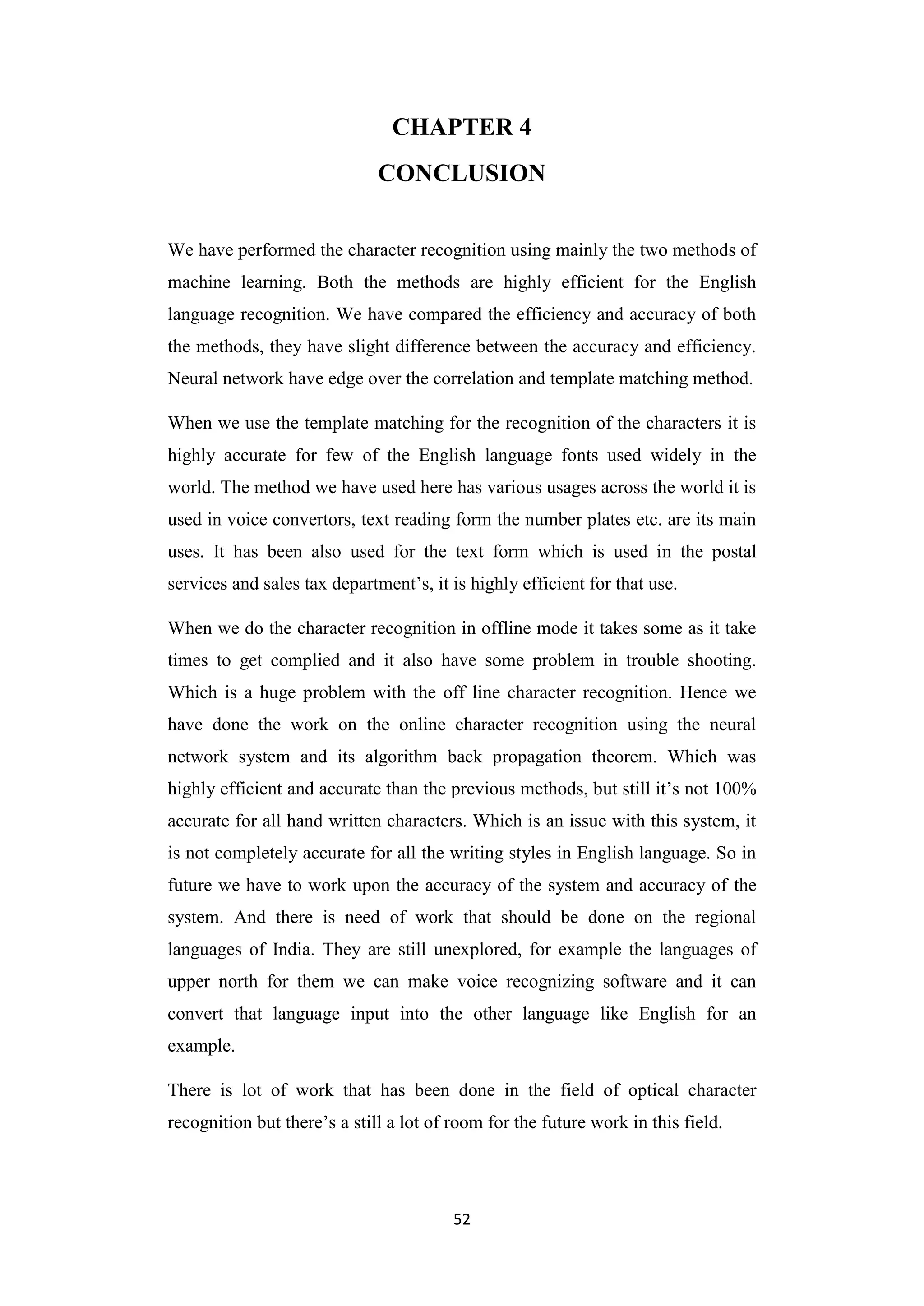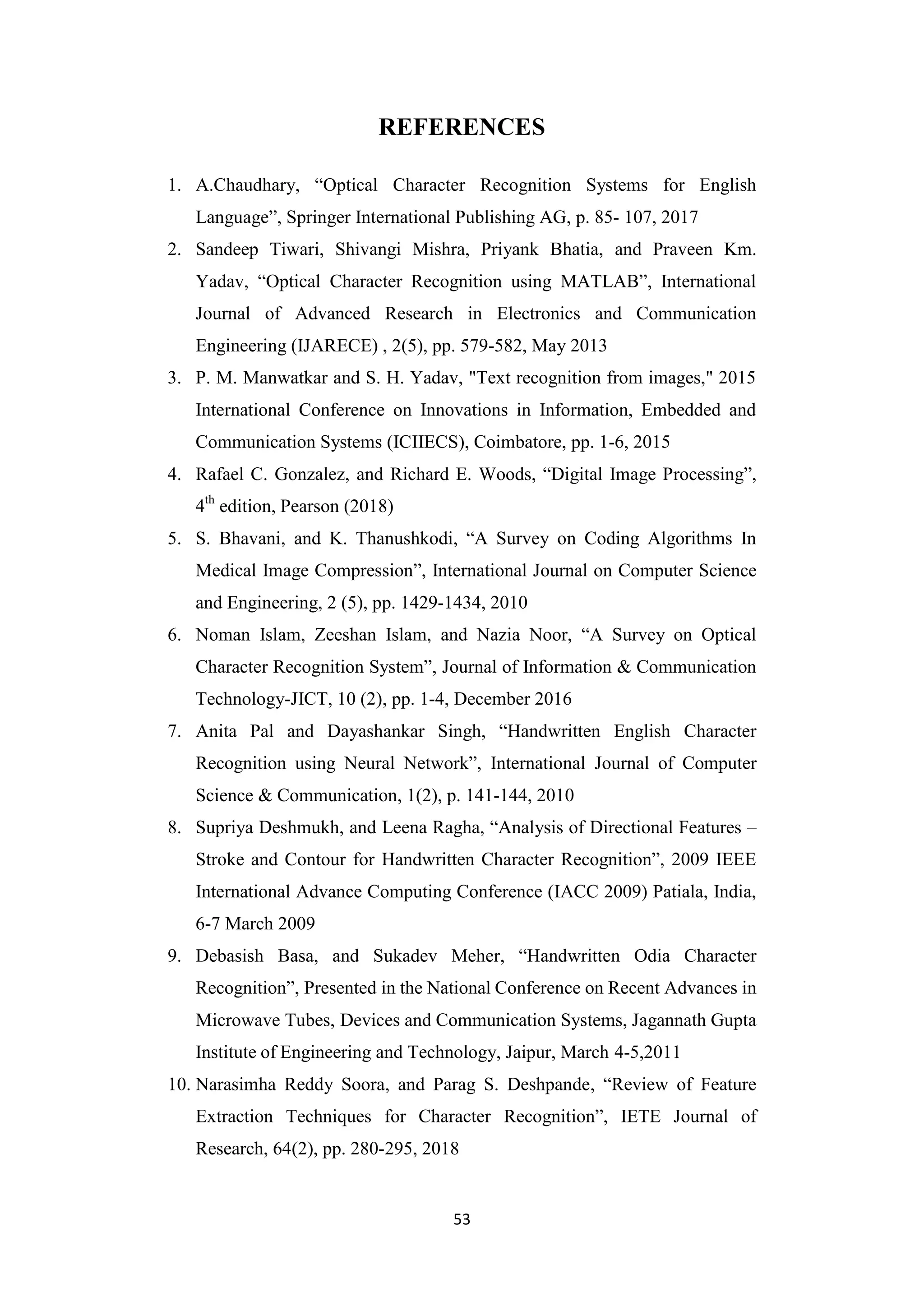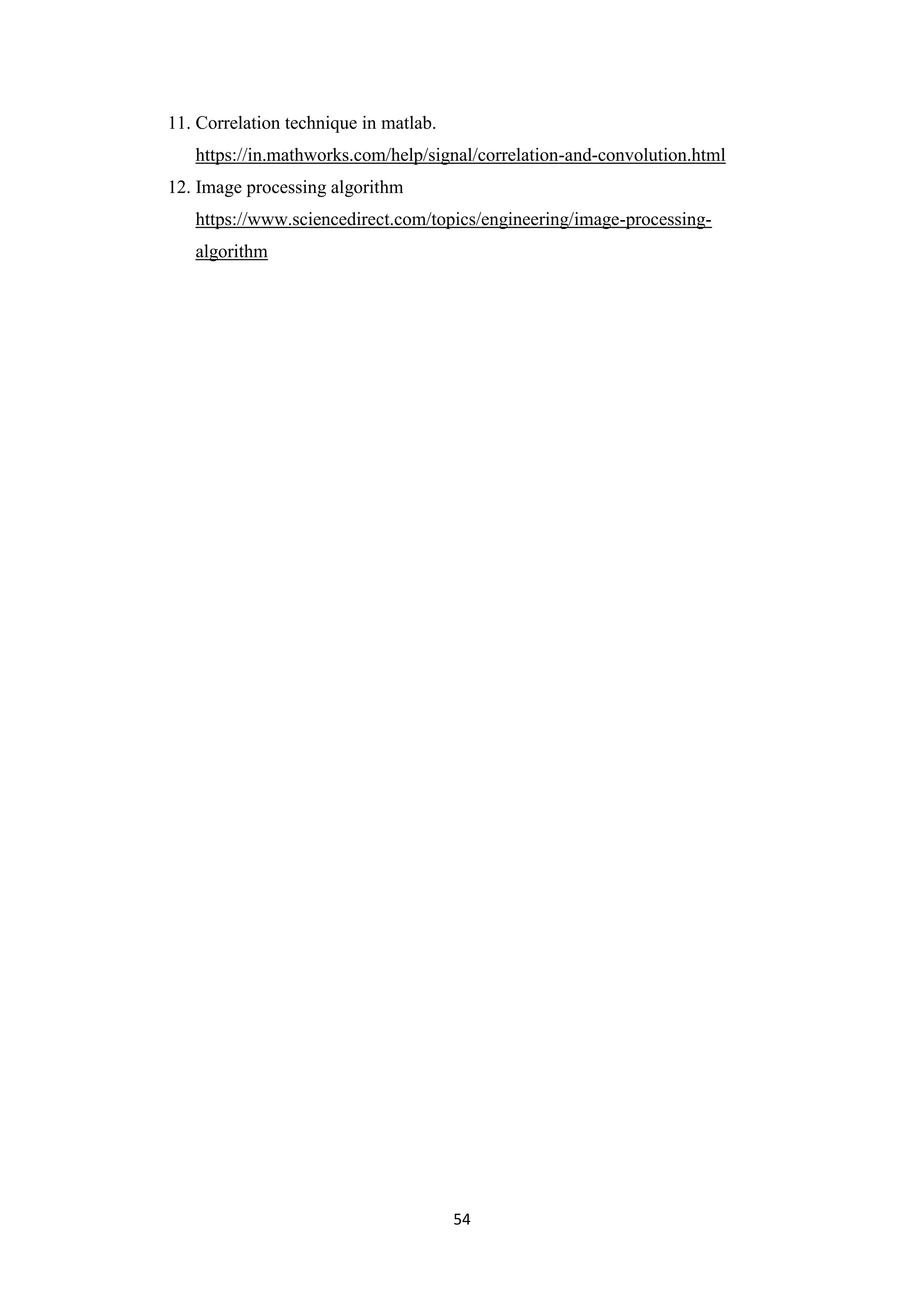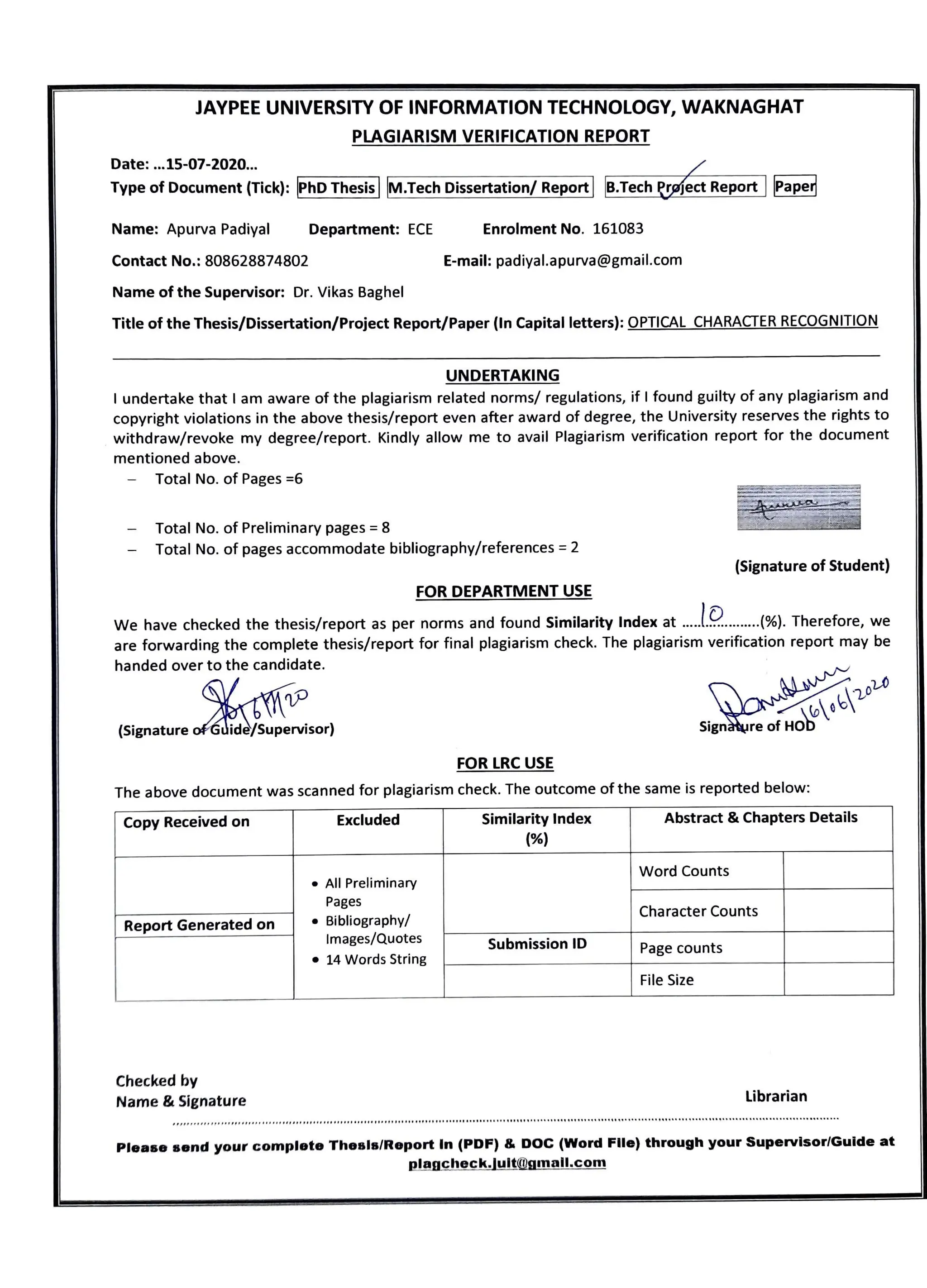This document provides a literature review of optical character recognition. It discusses early uses of OCR by the US postal service in the 1960s. In the 1970s, work on OCR for Hindi language began in India. Researchers at IIT Delhi developed one of the first commercial Hindi OCR systems called "Chitrankan" in the late 1990s. The document also briefly outlines some early techniques for estimating text slant, including methods using shirorekha analysis and mathematical approaches.
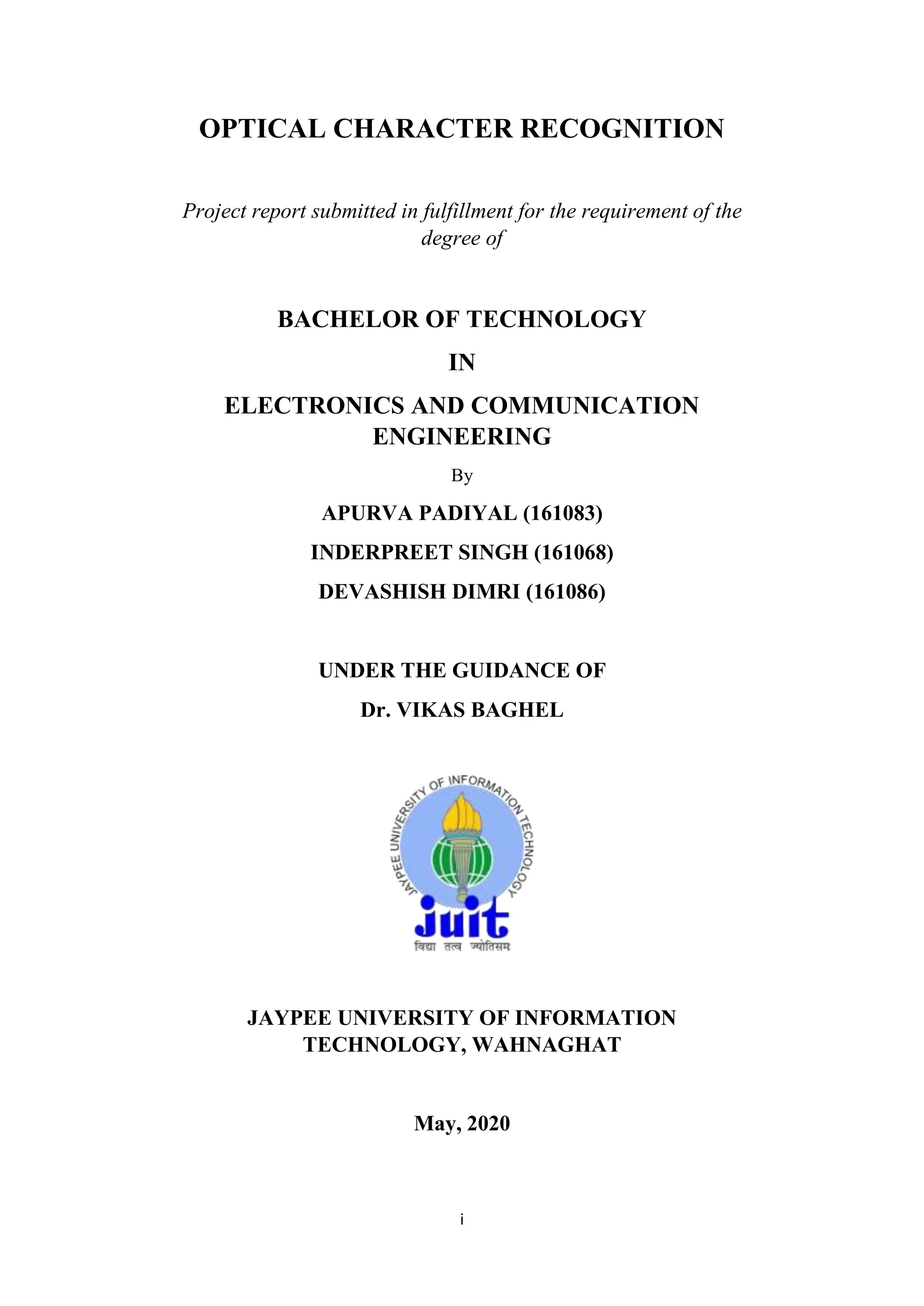
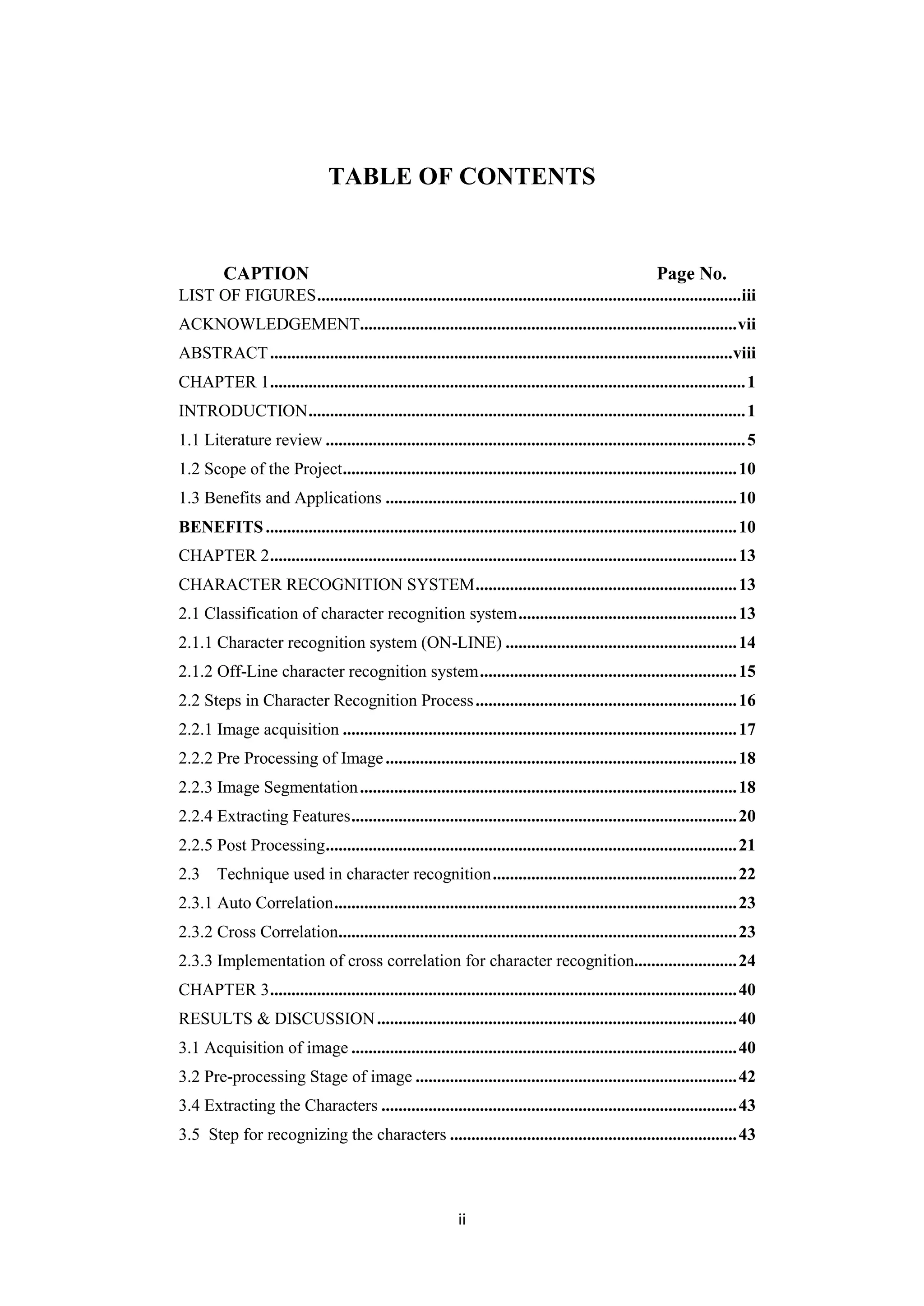
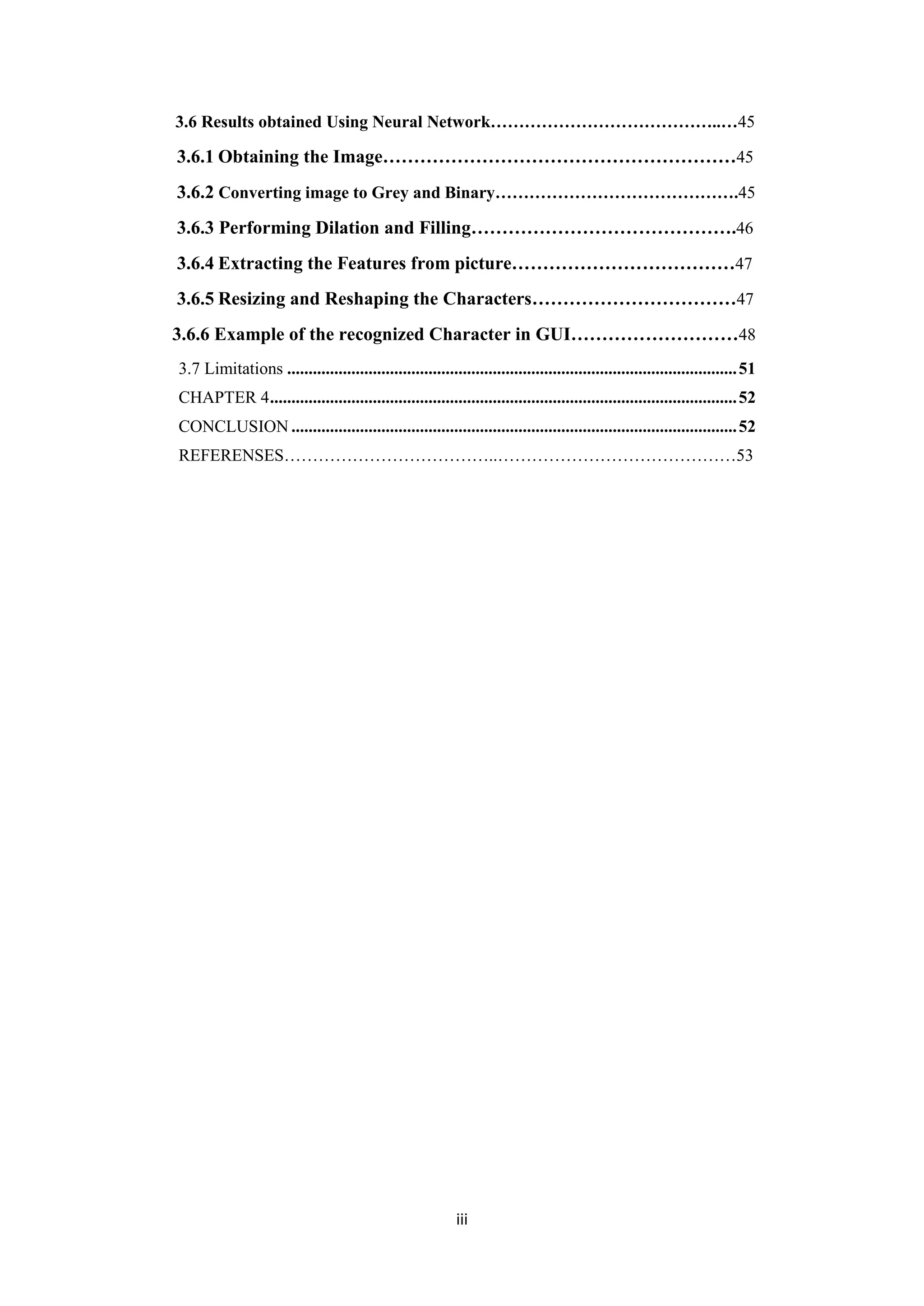
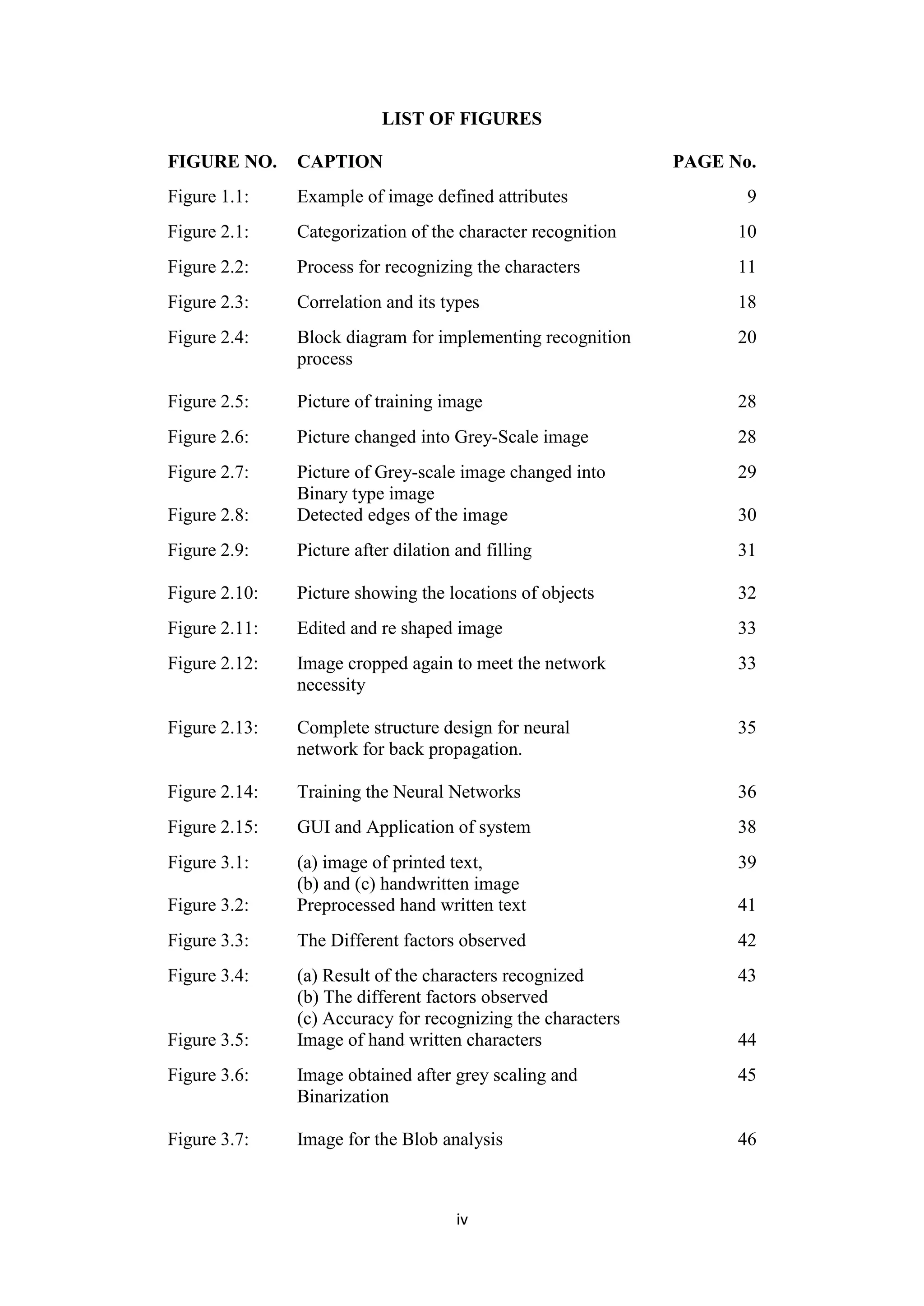
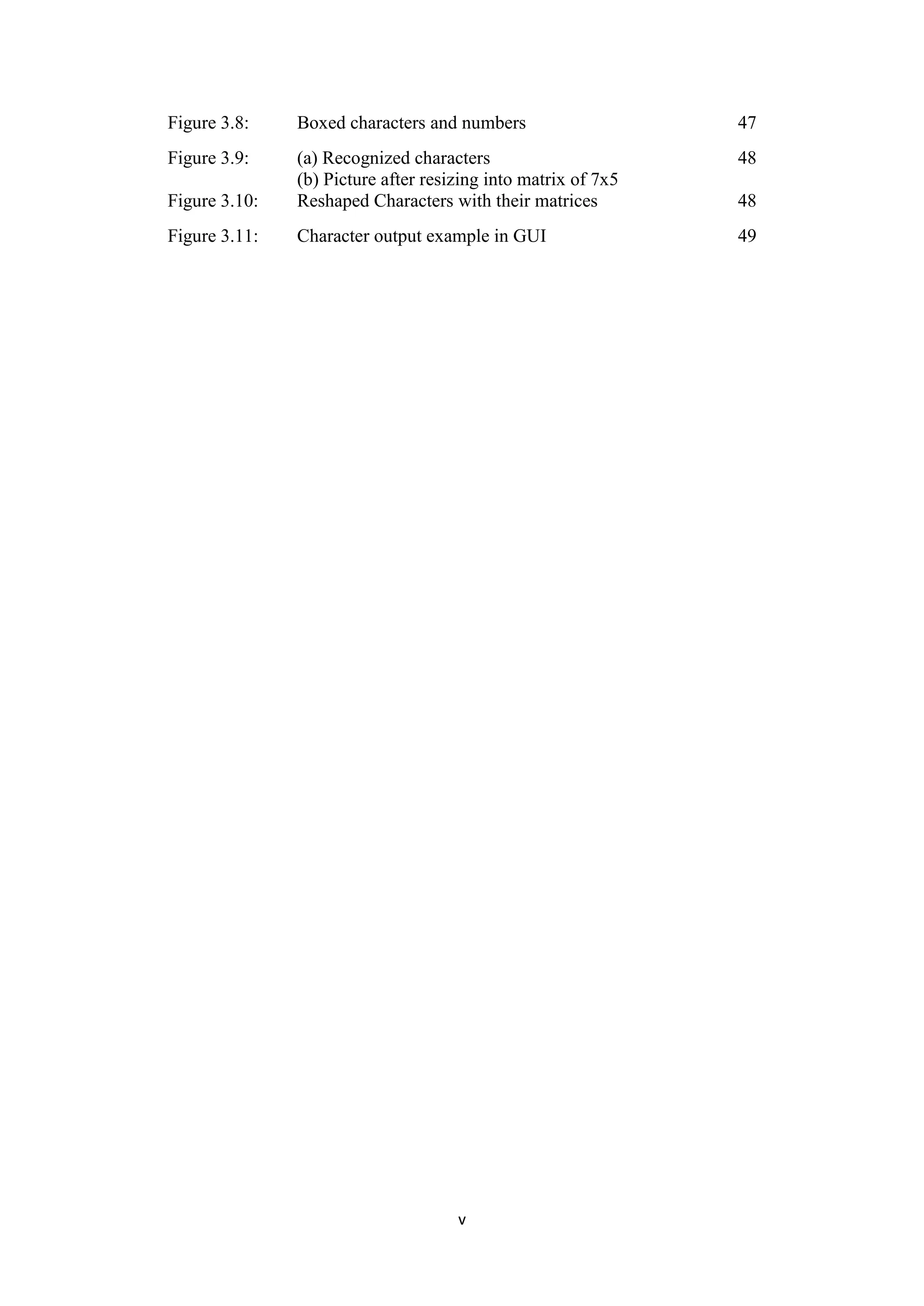
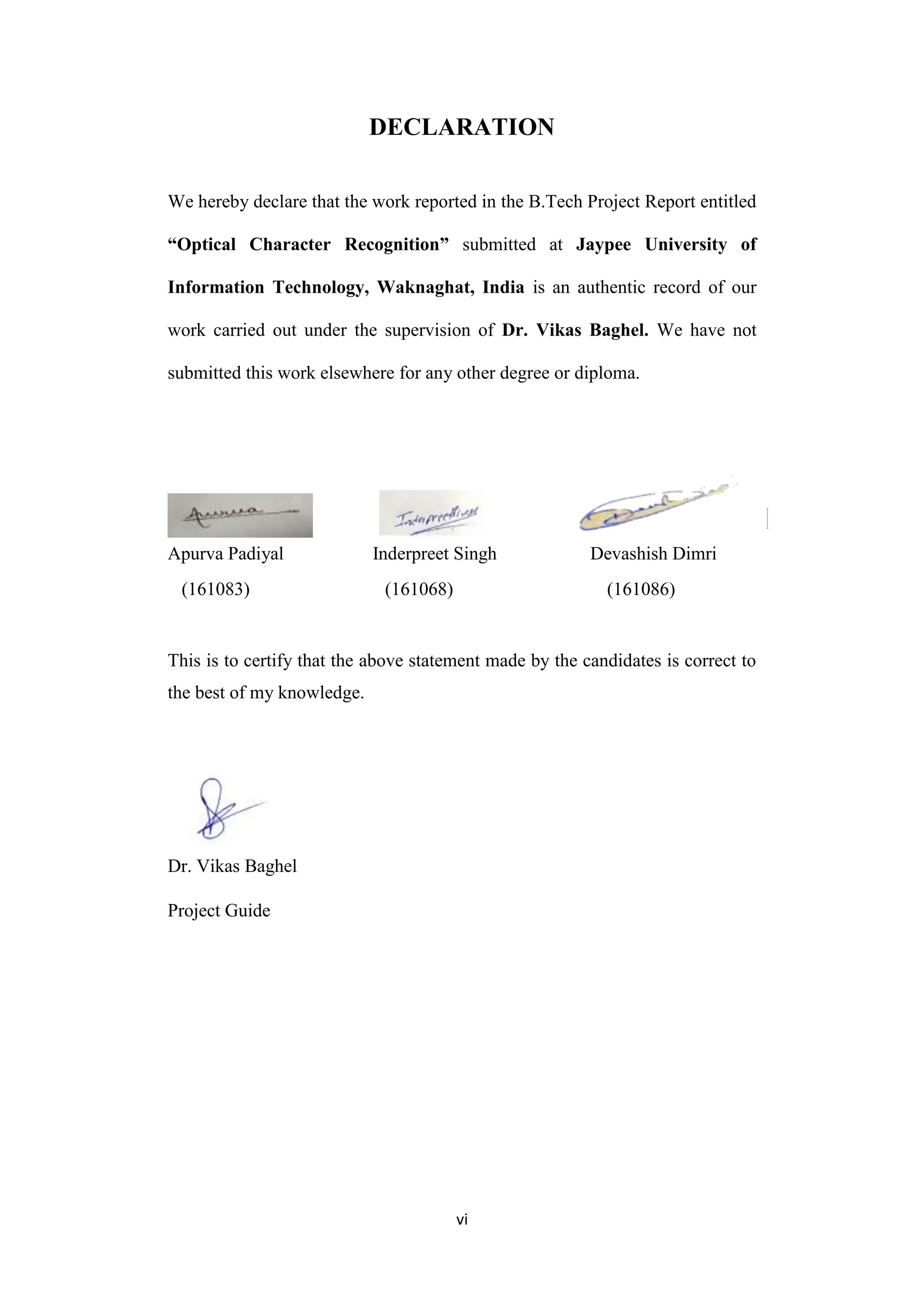
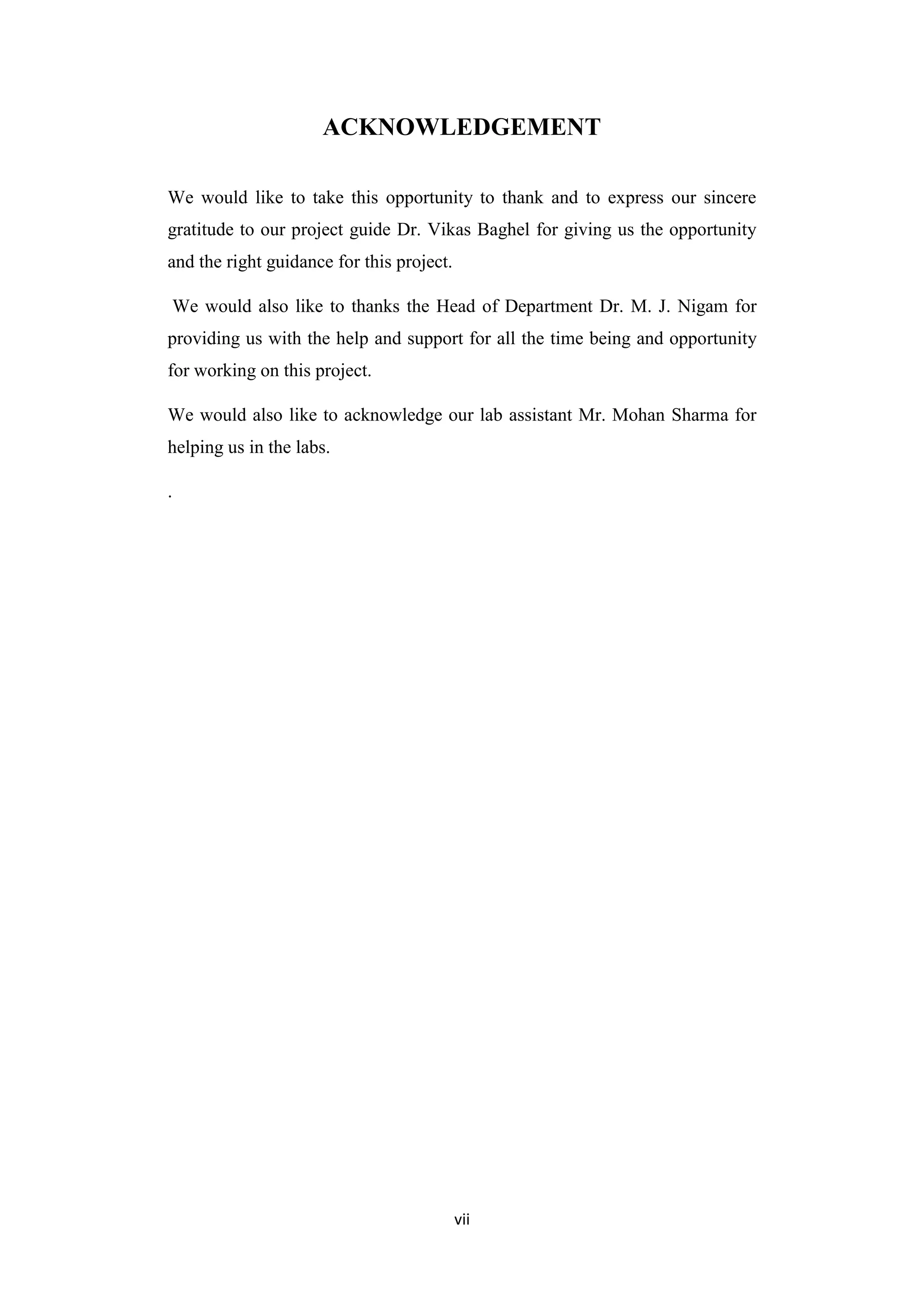

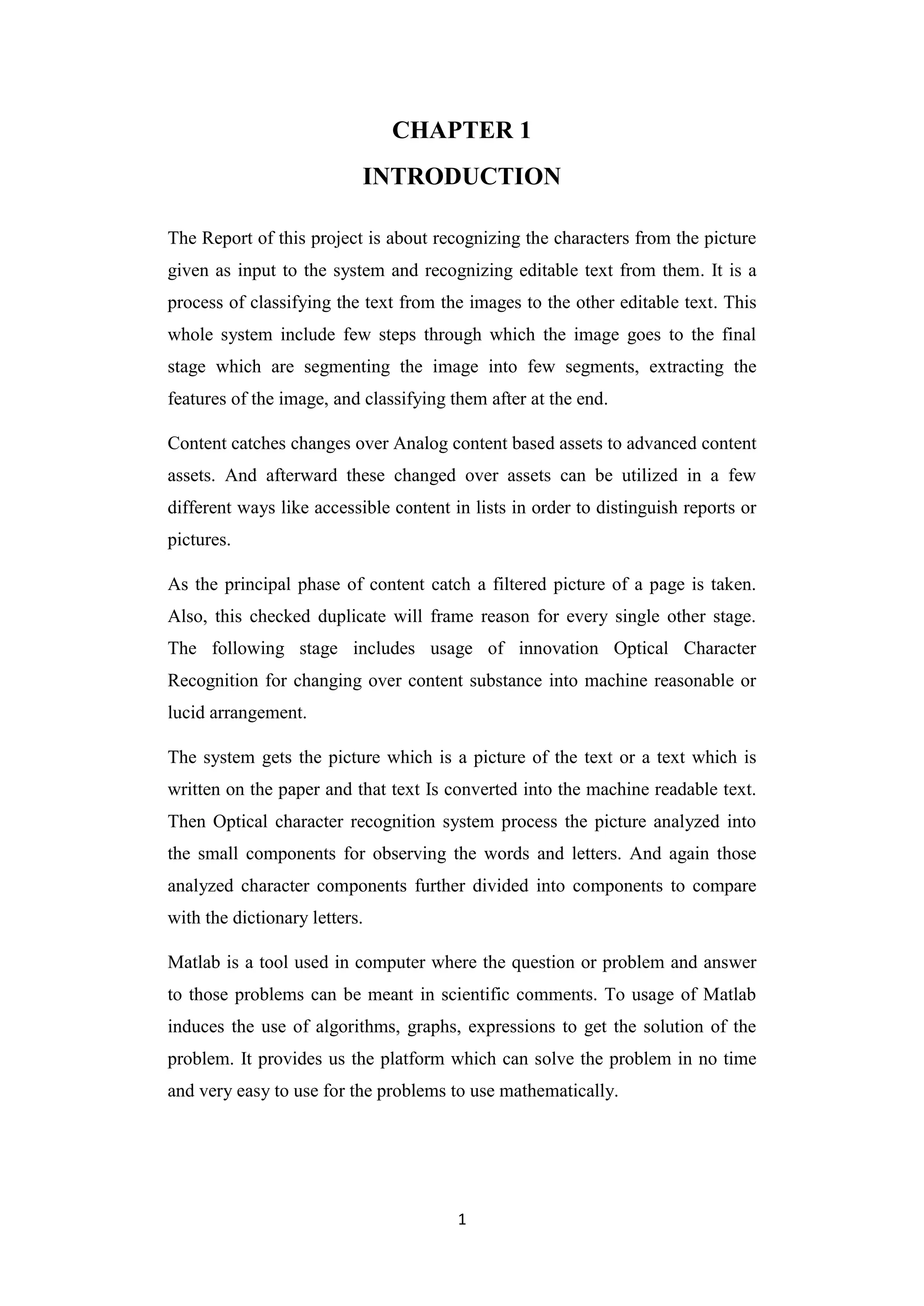
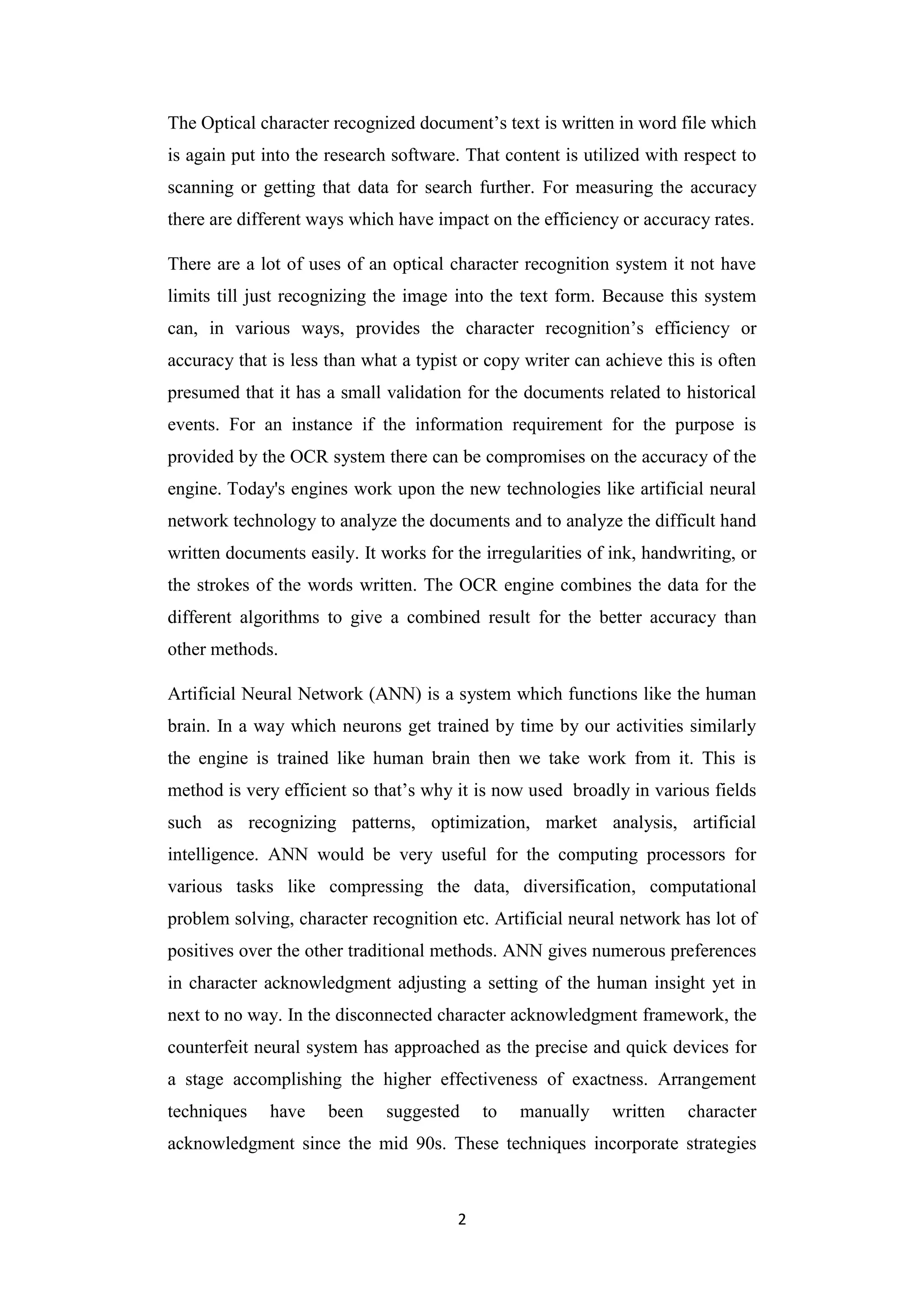
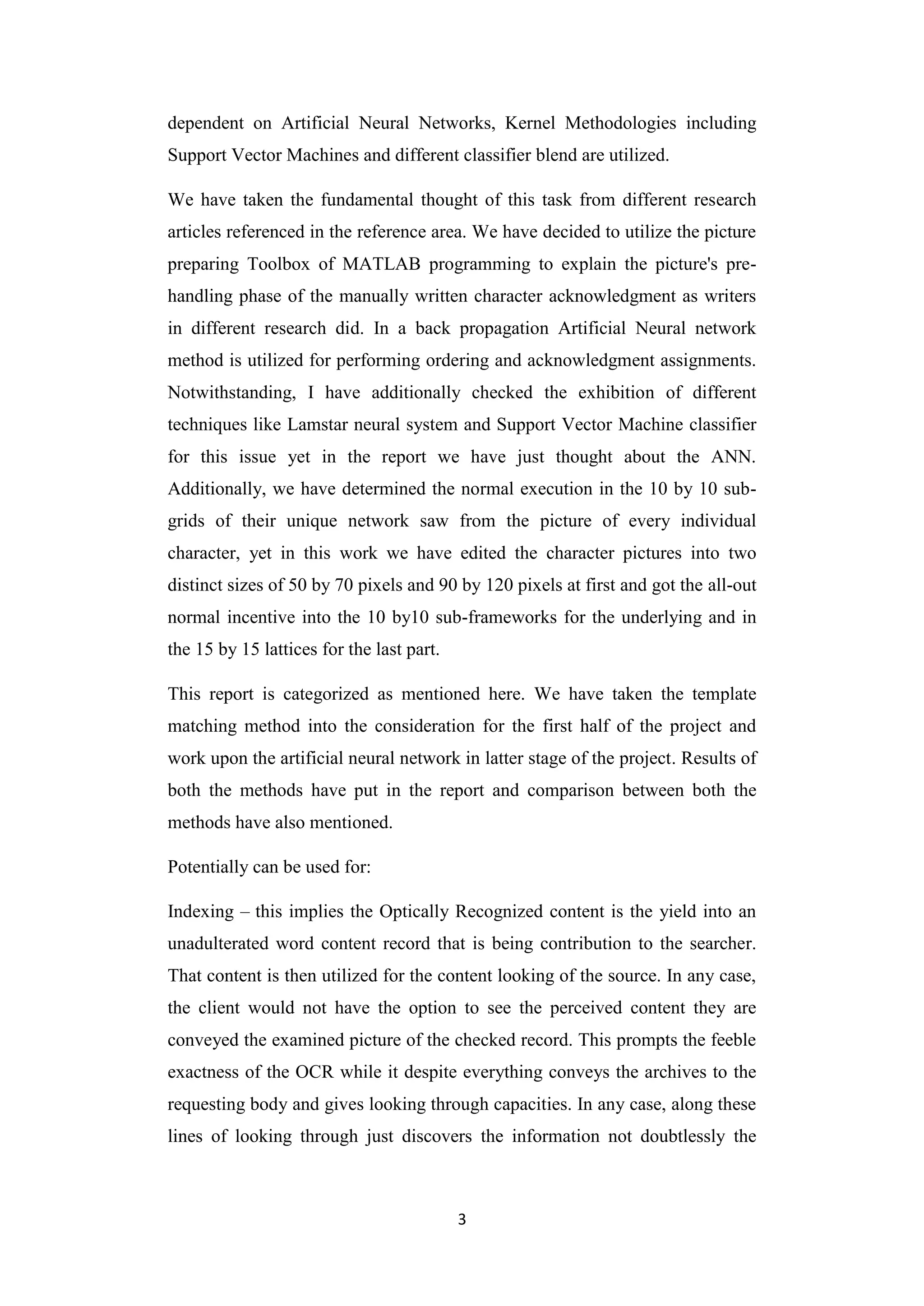
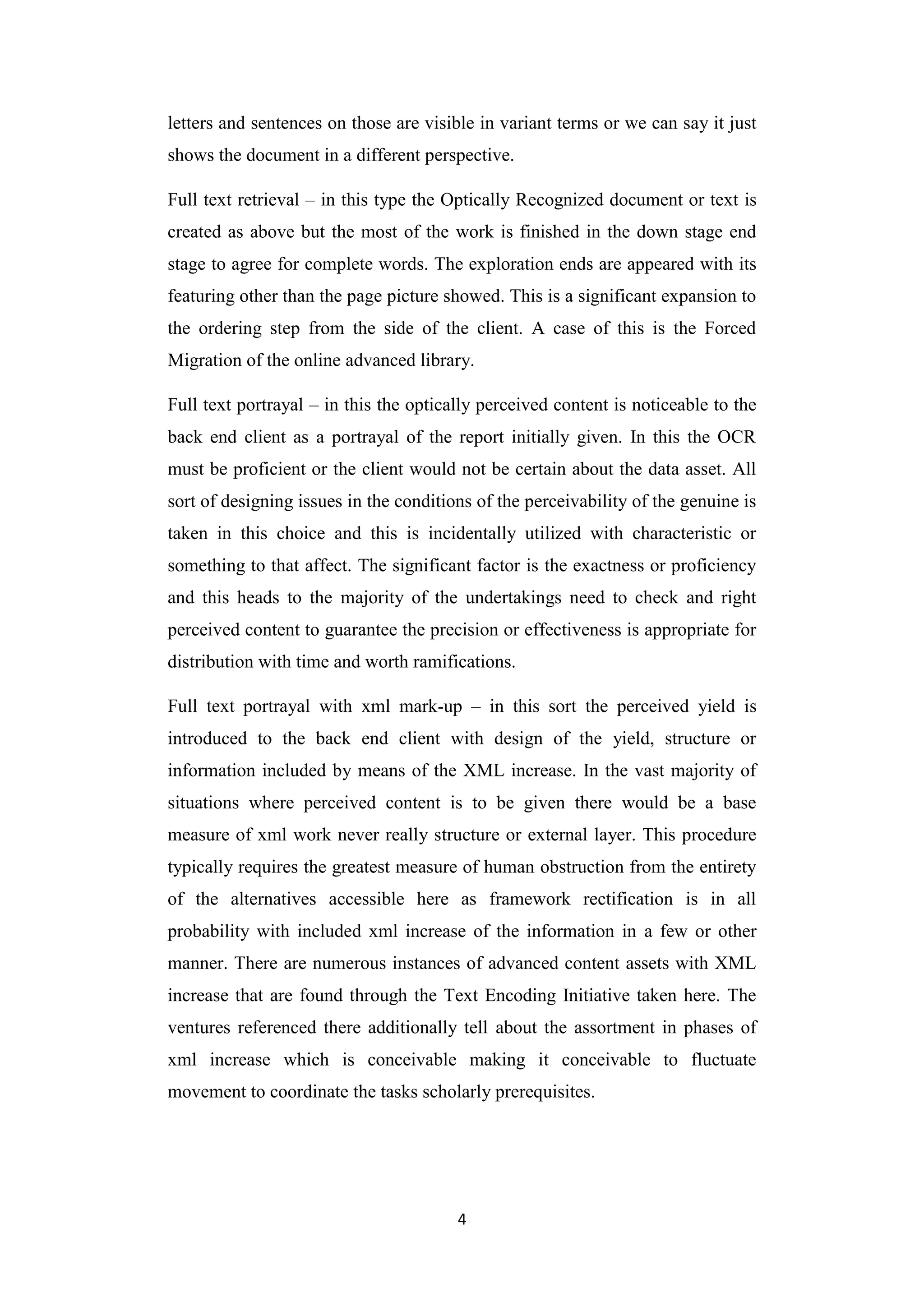


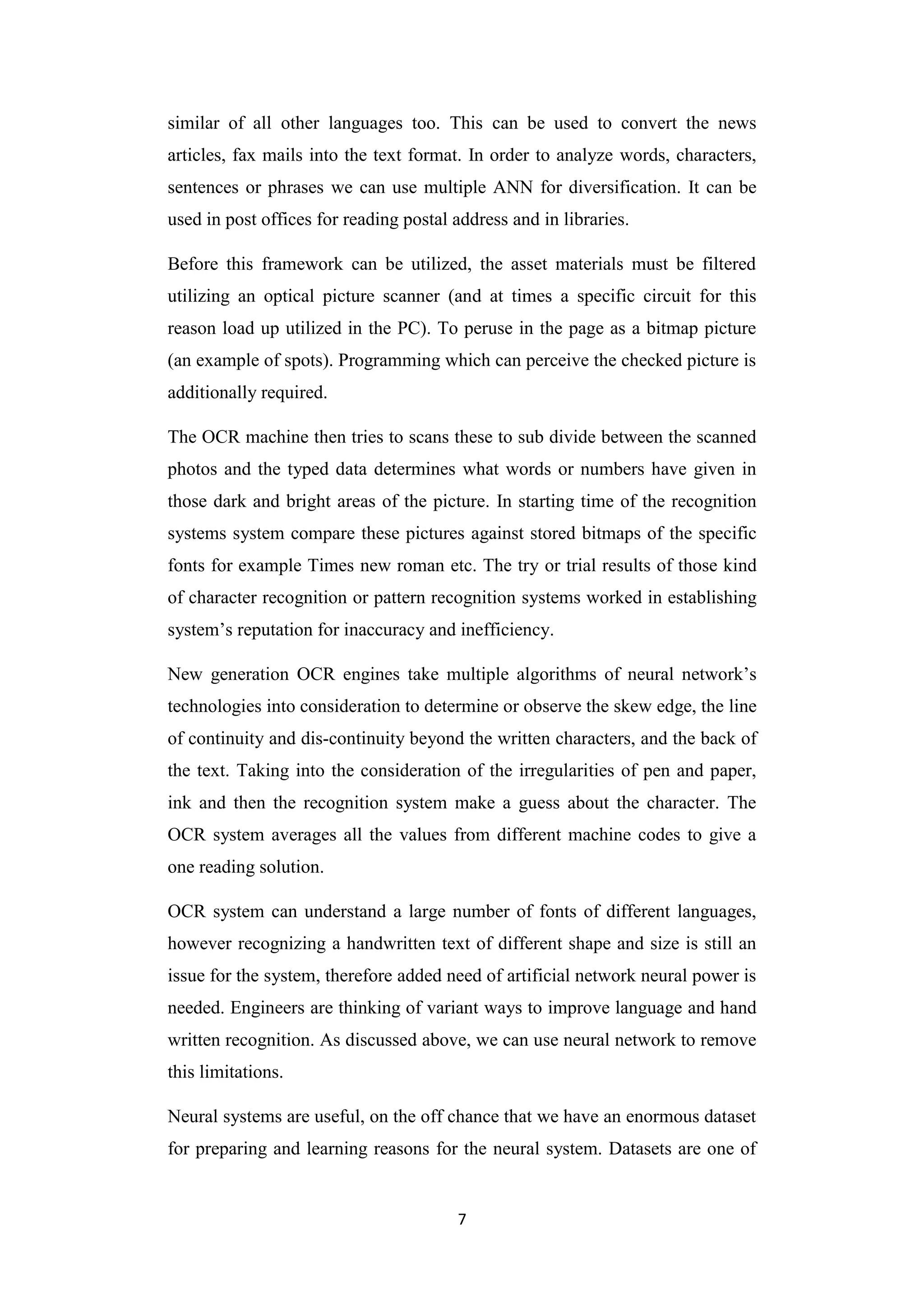
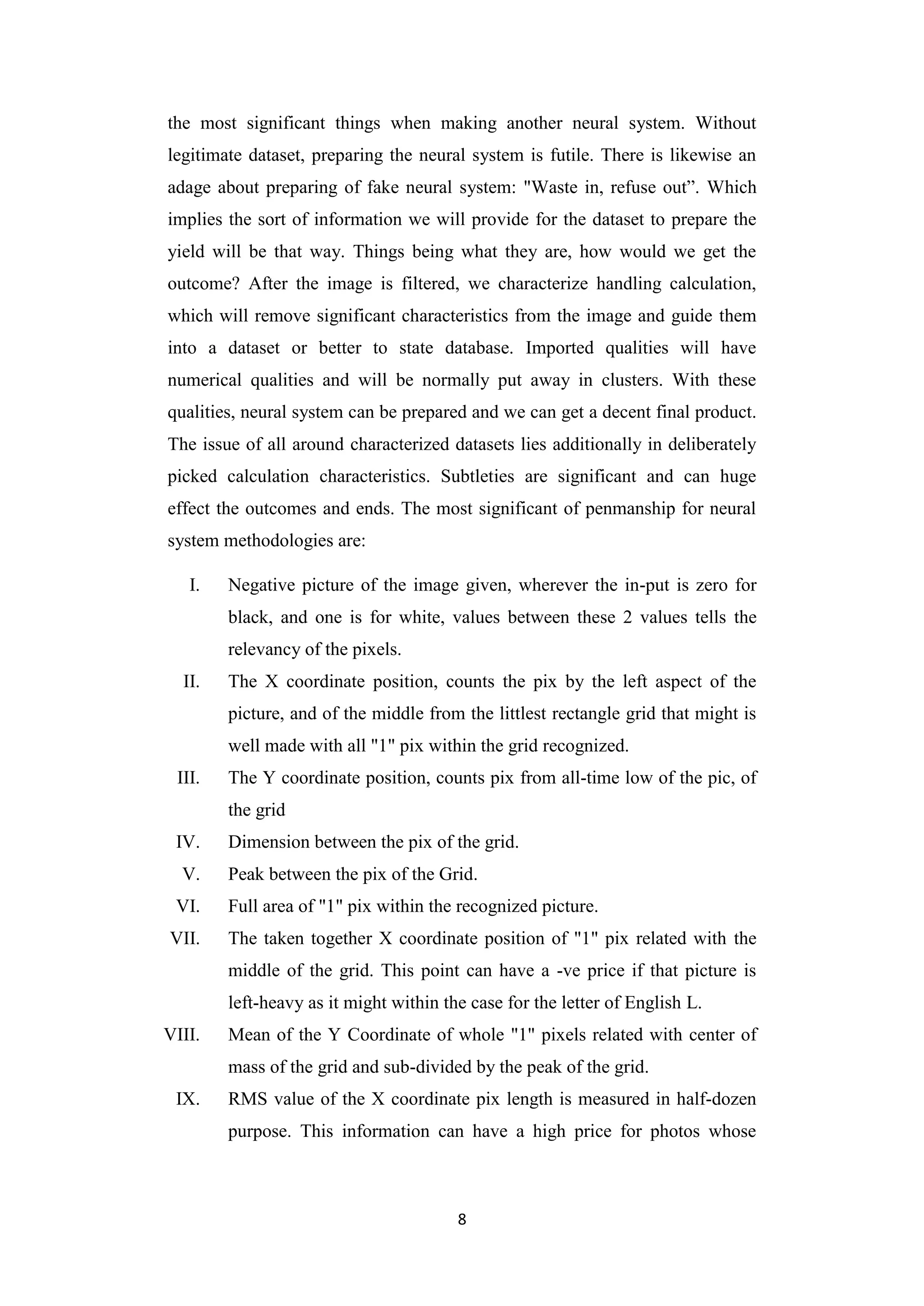
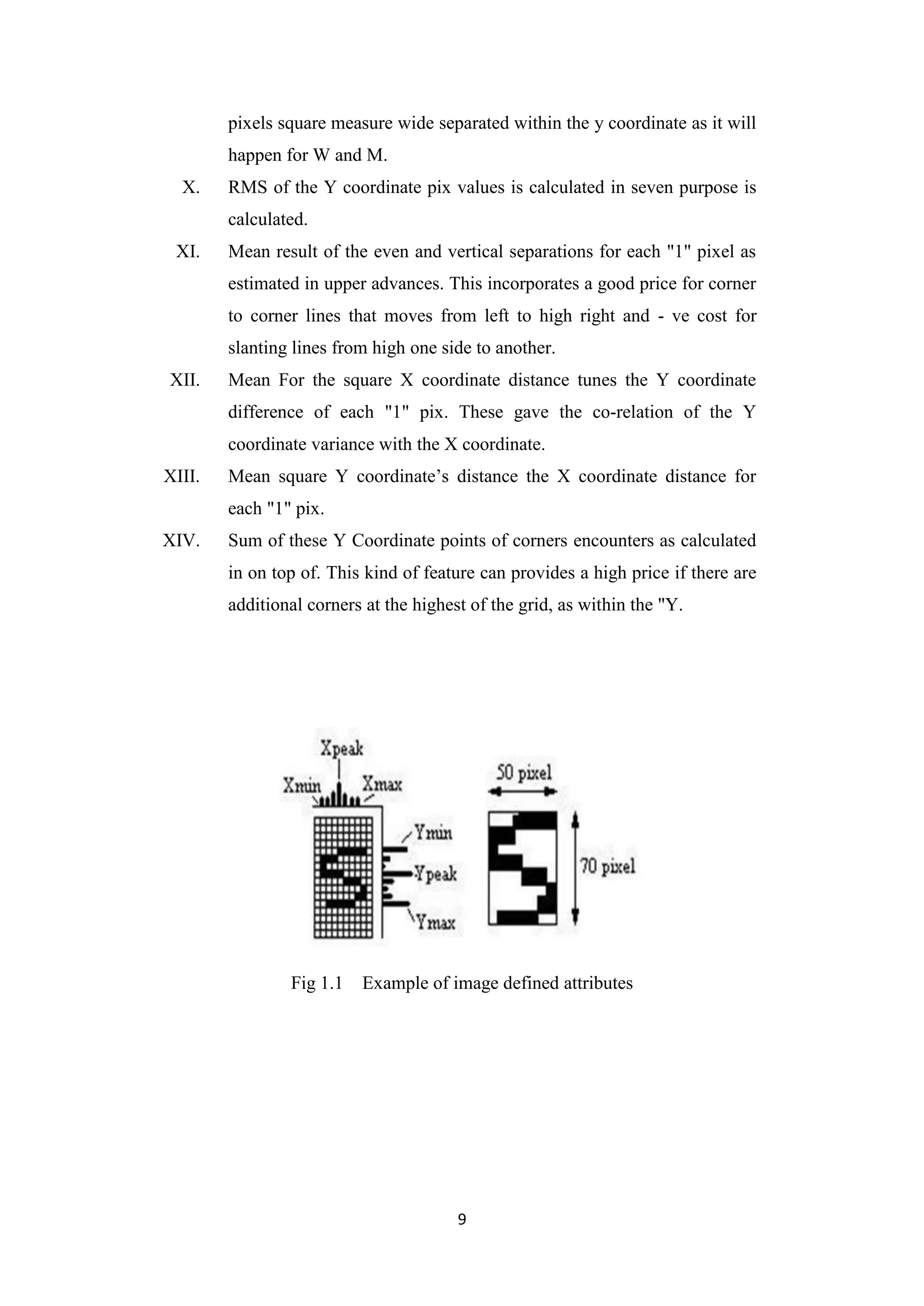
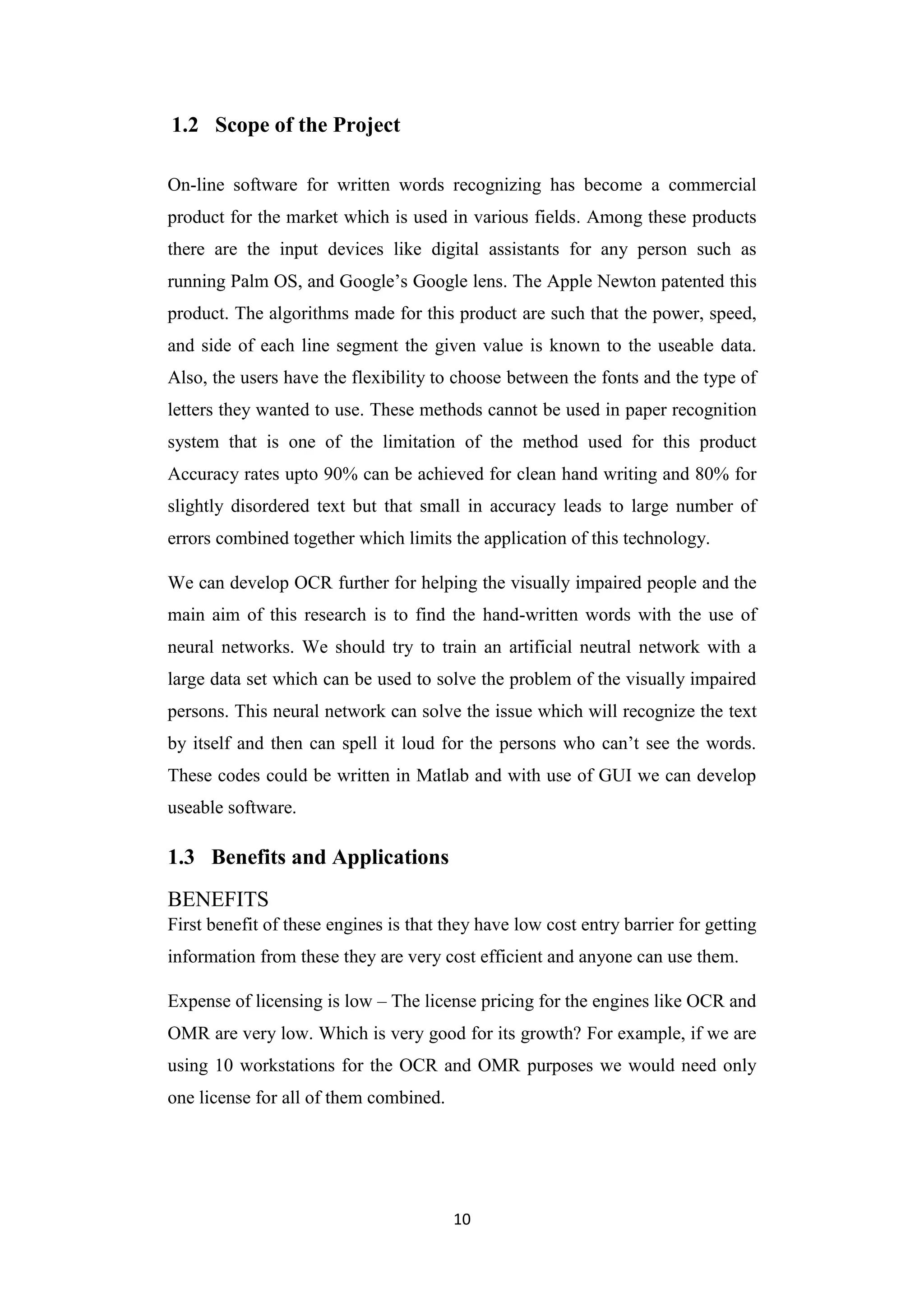

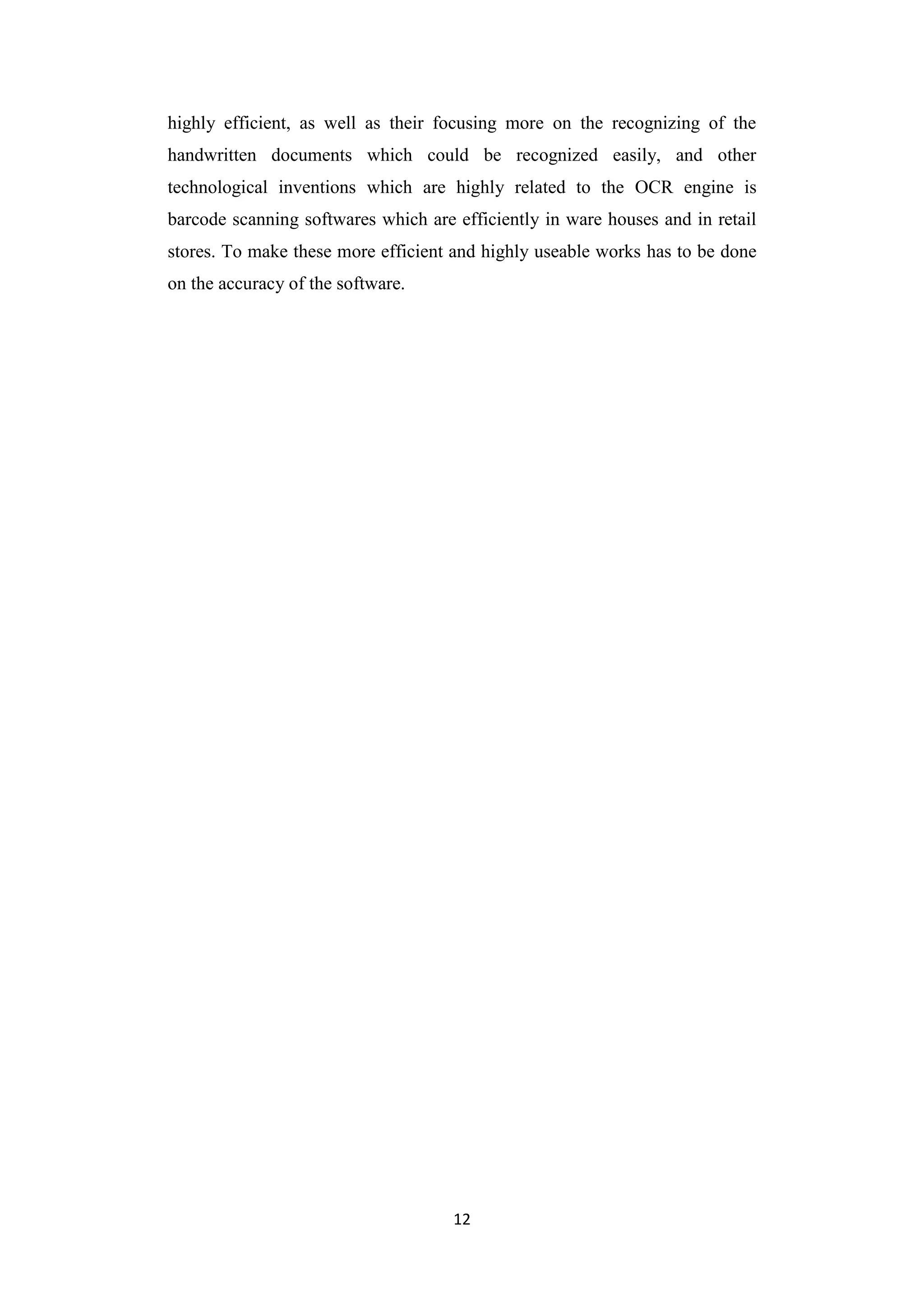
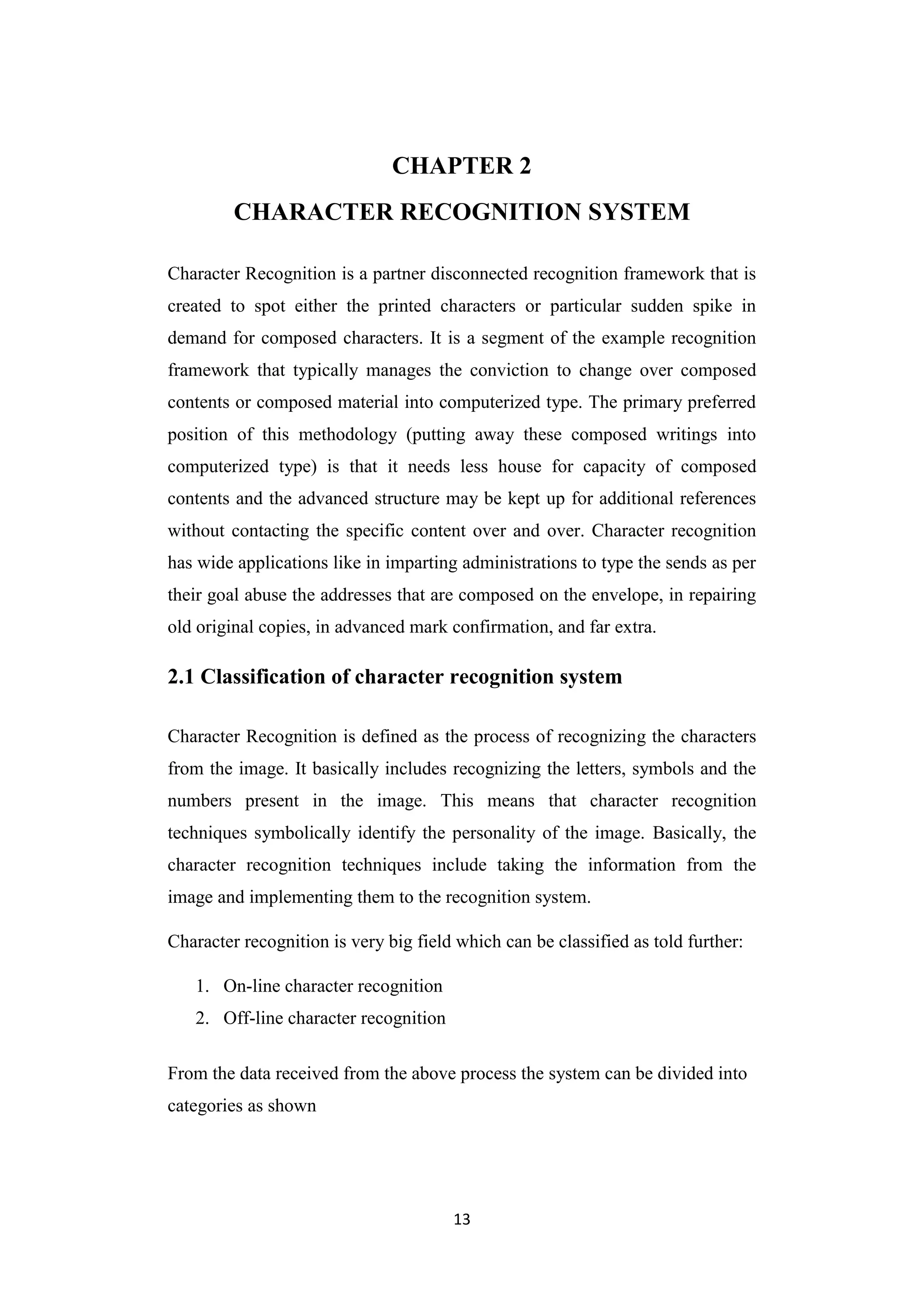

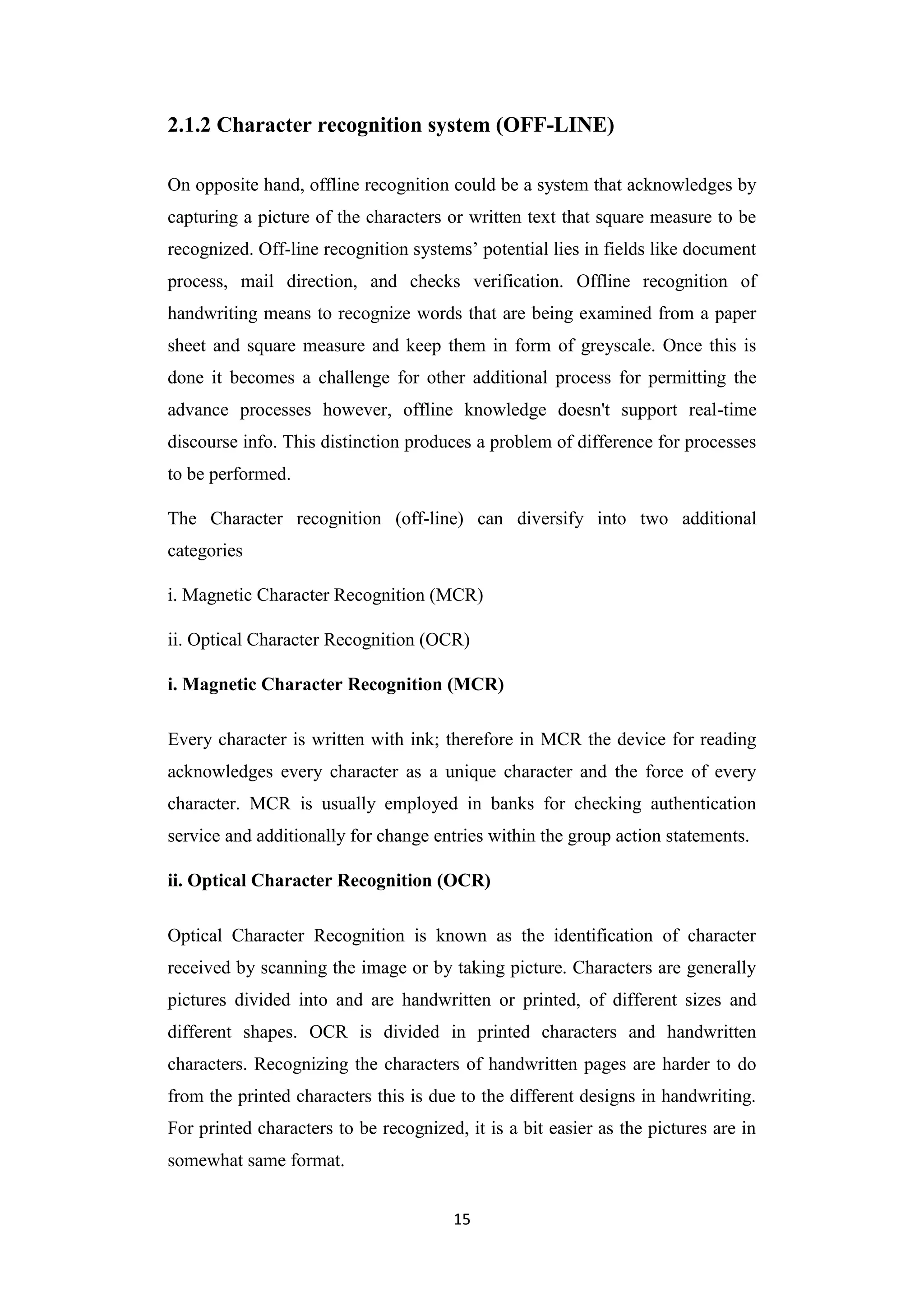
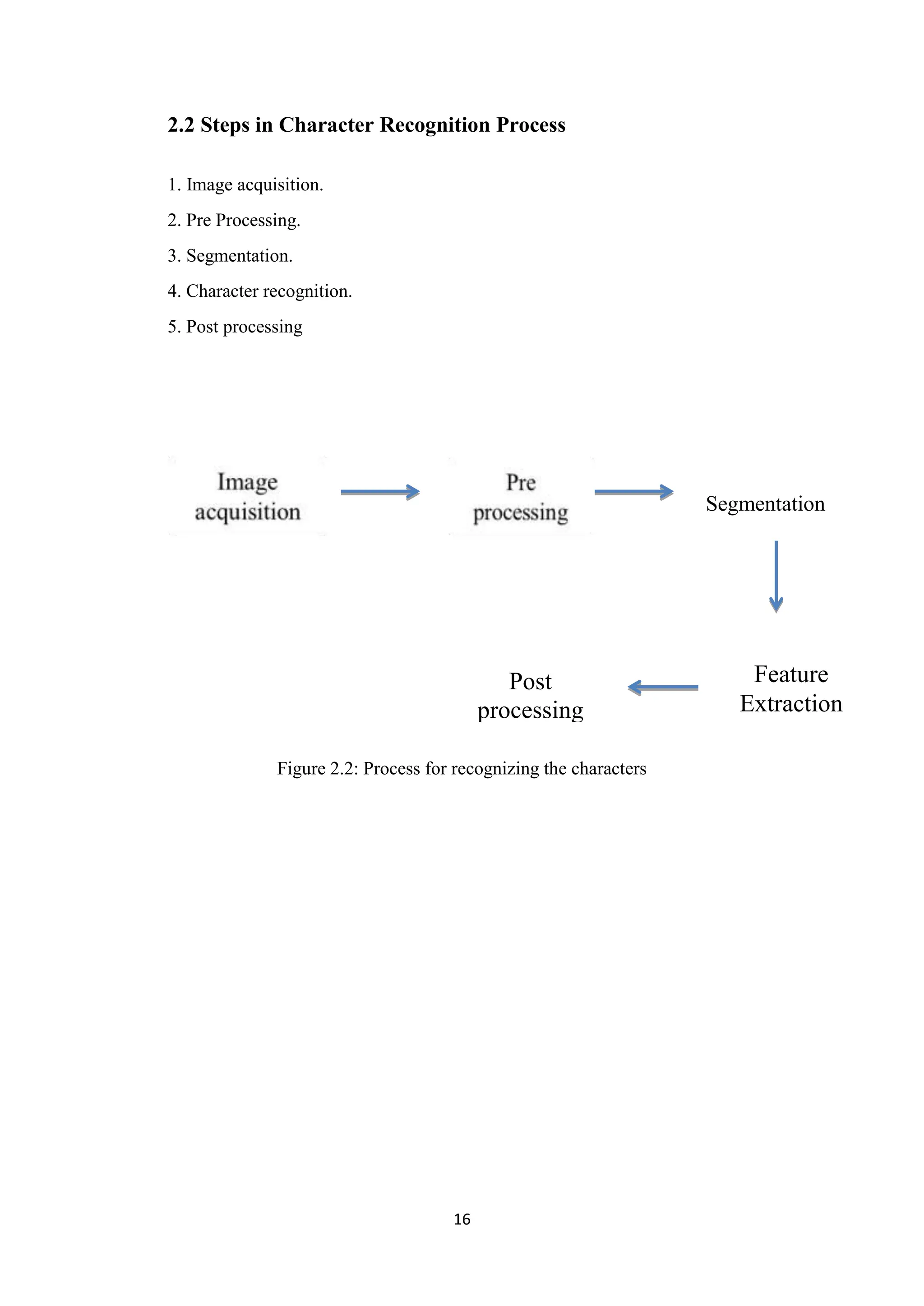
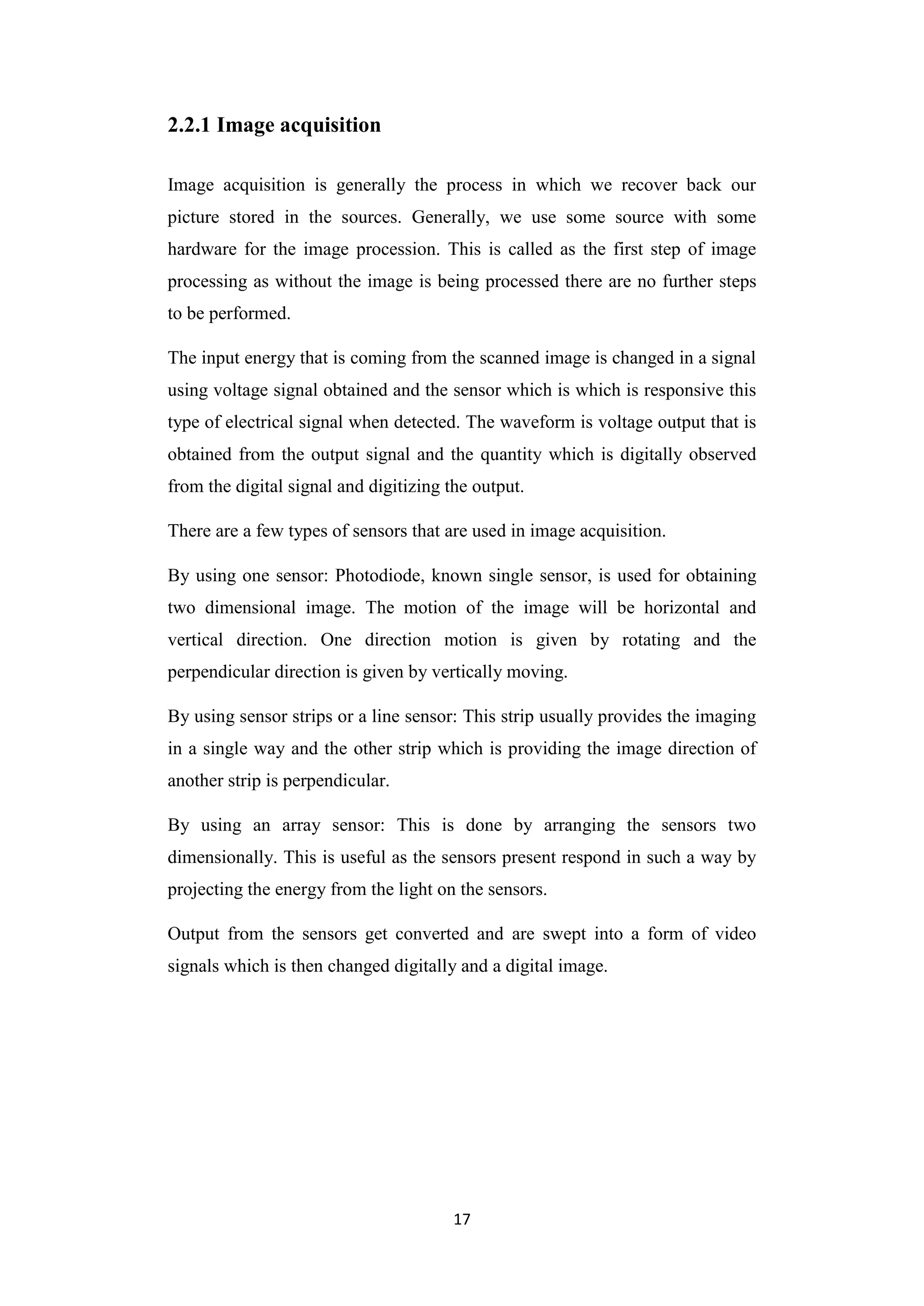

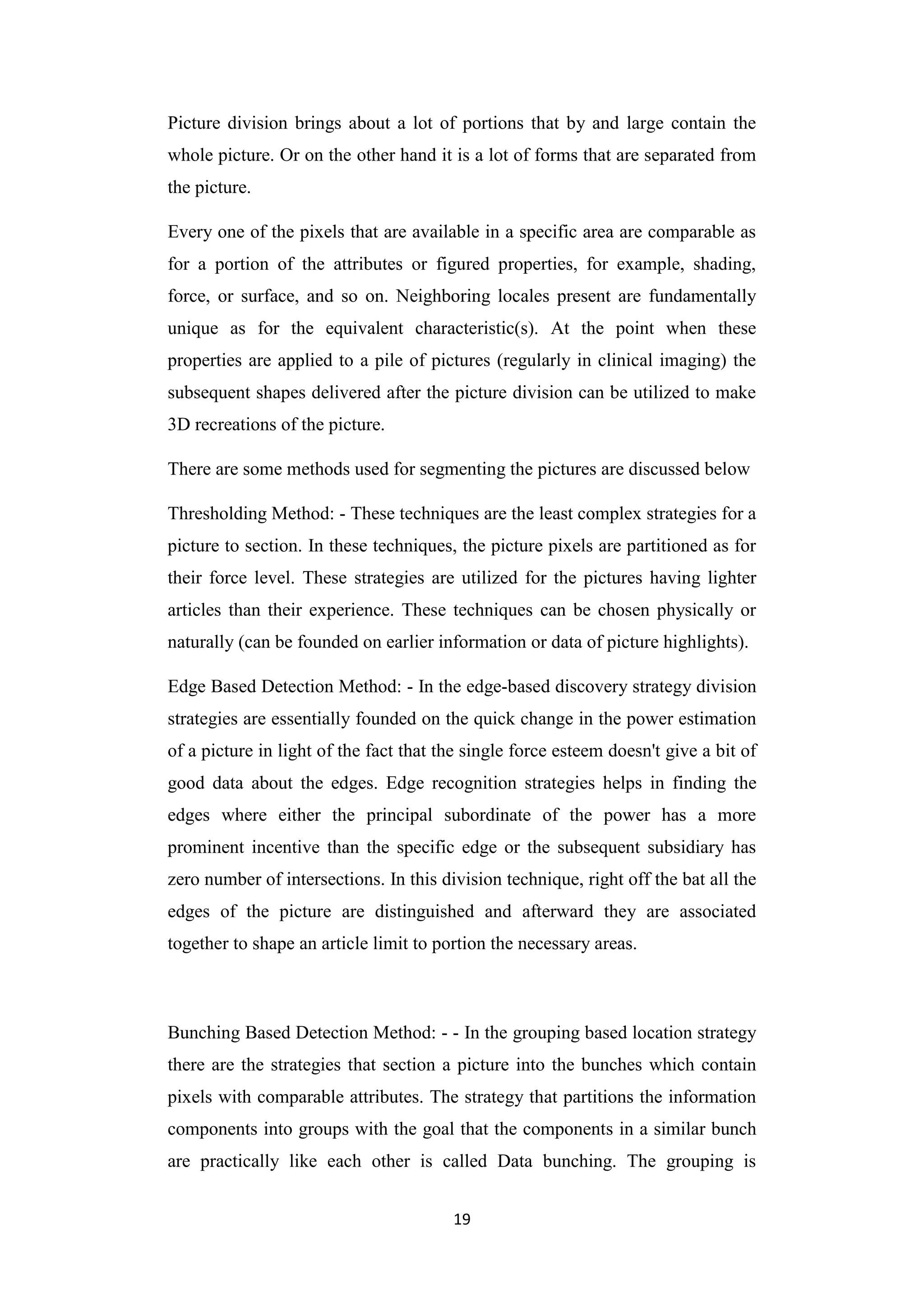

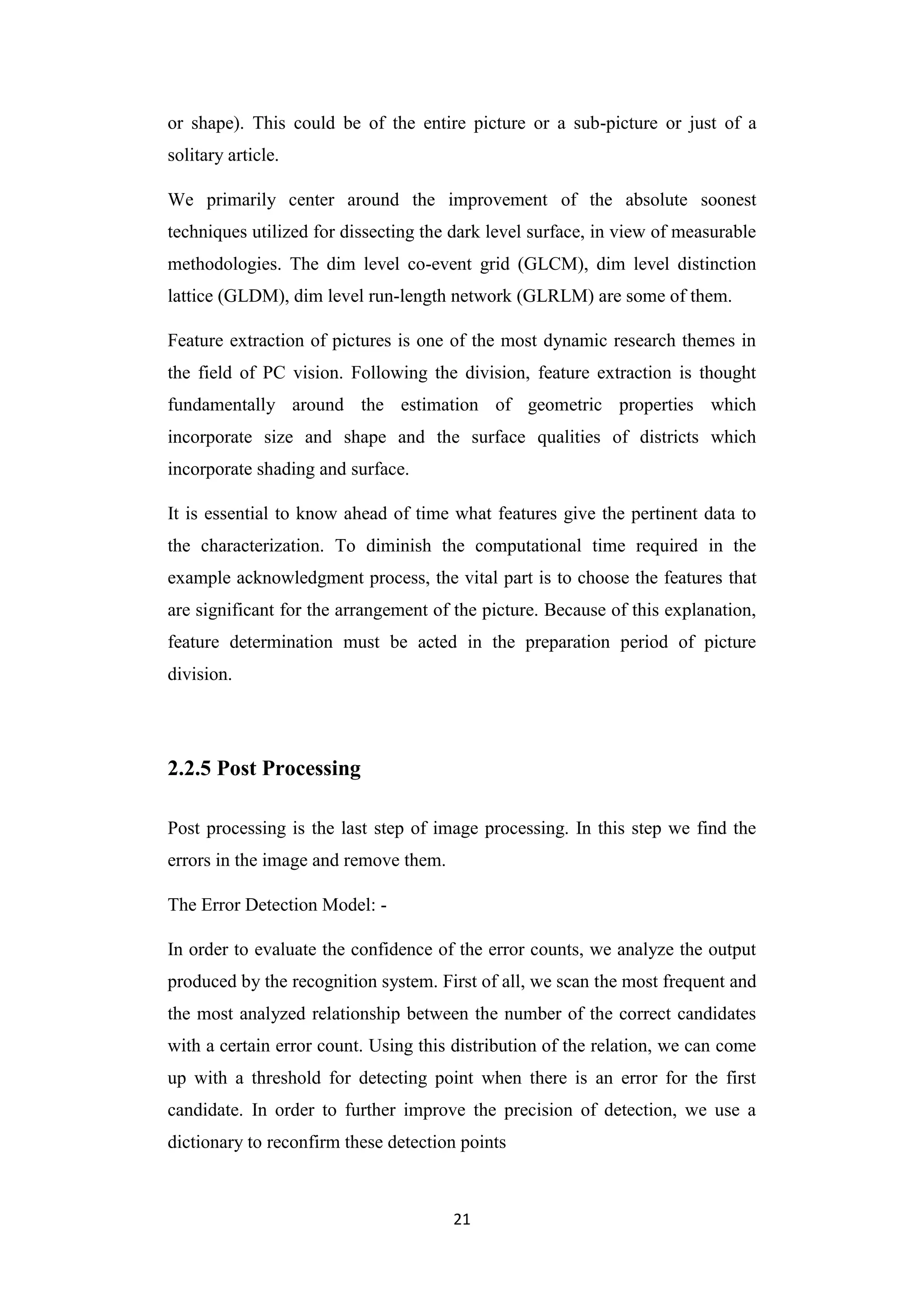
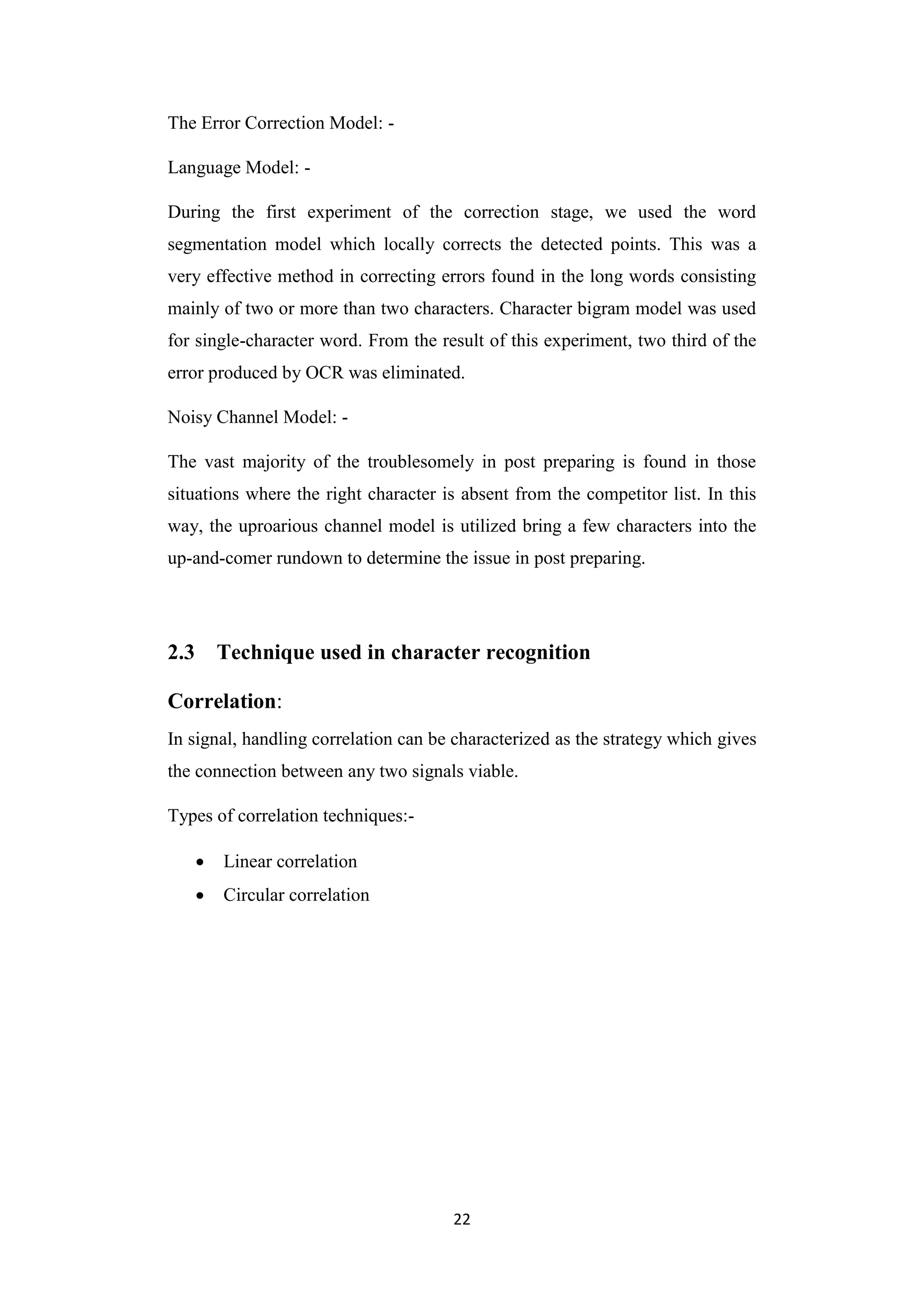
![23
Figure 2.3: Correlation and its types.
2.3.1 Auto Correlation
Autocorrelation is characterized as the cross-connection of a sign with itself. It
is characterized as the similitude between the perceptions as an element of the
time and the partition between similar signs. Essentially it is a numerical
apparatus that finds the examples rehashing itself. The nearness of an
intermittent sign which has been covered under commotion, or distinguishing
the missing essential recurrence in a sign suggested by its consonant
frequencies are a portion of its models. In auto connection, a pinnacle
consistently shows up at the slack of zero, until and except if the sign is an
insignificant zero sign.
𝑓 𝑛 ∗ 𝑓 𝑛 = 𝑓𝑐
𝑚 𝑓[𝑛 + 𝑚]
∞
𝑚=−∞
2.3.2 Cross Correlation
Cross-Correlation is characterized as a proportion of likeness of two
waveforms as the capacity of time-slack applied to one of them. Sliding spot
item or inward item are various names of cross-correlation. To look through a
long span signal with a shorter known element we utilize cross-correlation.
There are uses of cross-correlation in design acknowledgment moreover.
𝑓 𝑛 ∗ 𝑔 𝑛 = 𝑓𝑐
𝑚 𝑔[𝑛 + 𝑚]
∞
𝑚=−∞](https://image.slidesharecdn.com/opticalcharacterrecognition1-240330184841-07a77147/75/Optical-Character-Recognition-deep-learning-pdf-31-2048.jpg)
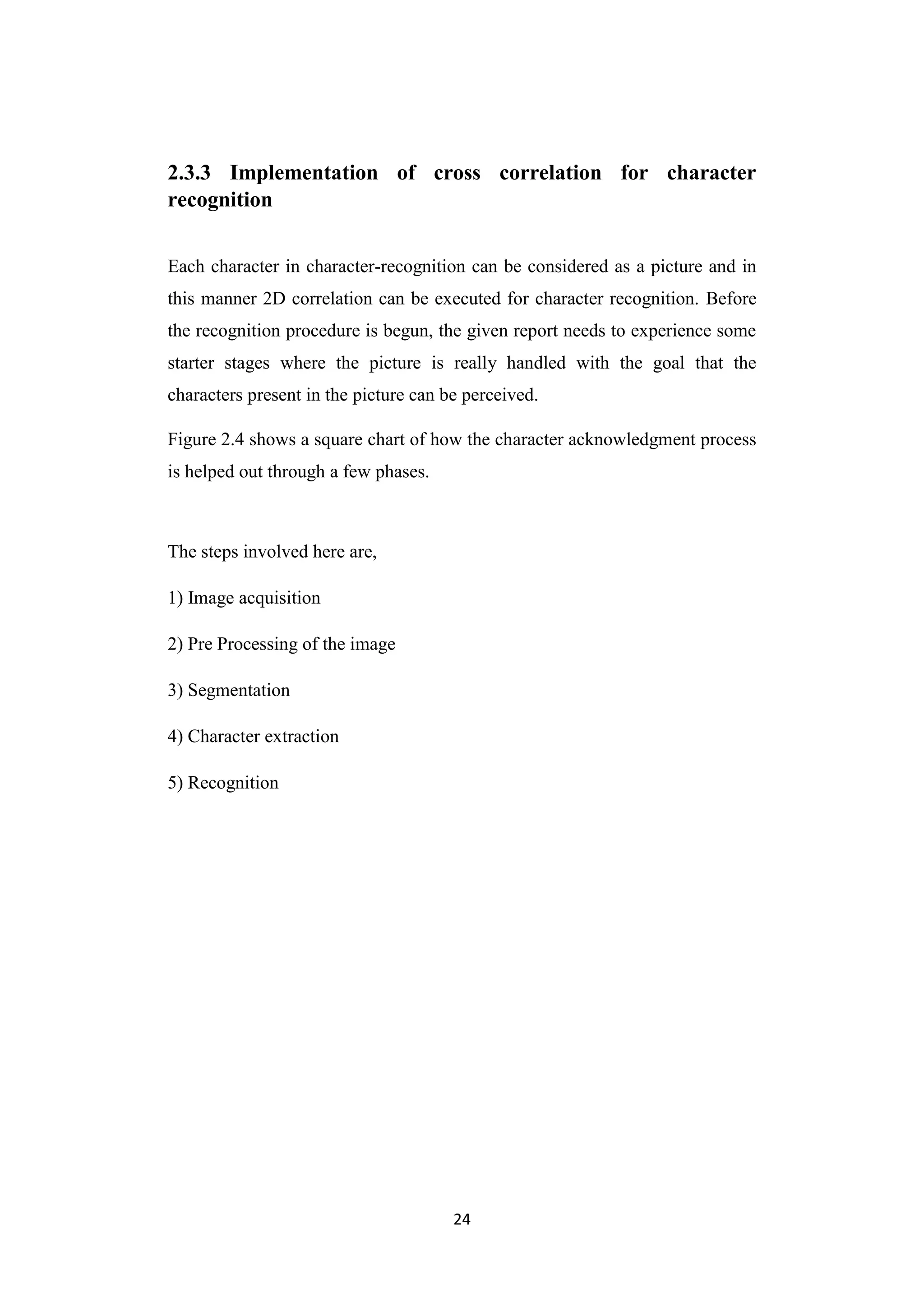
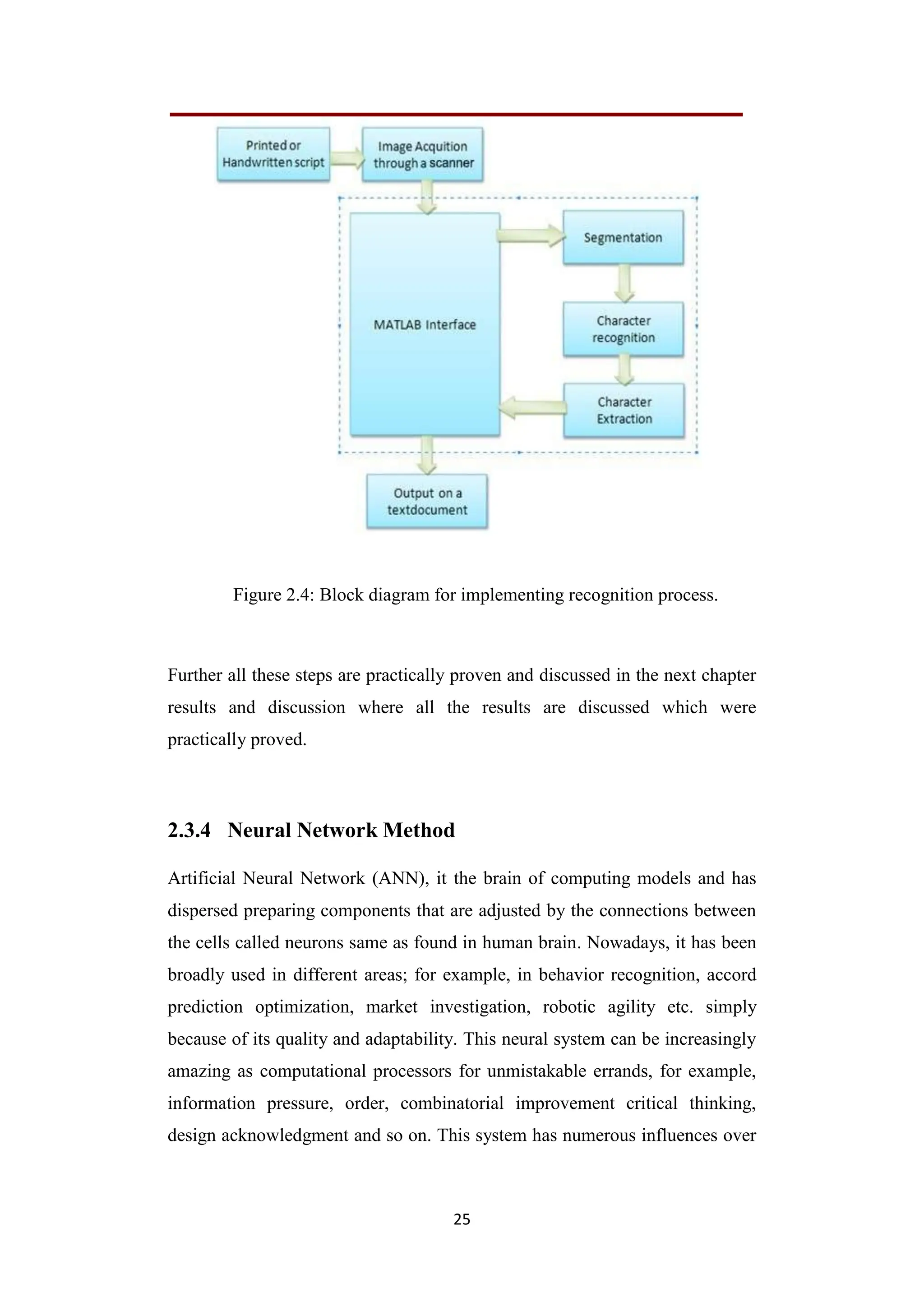
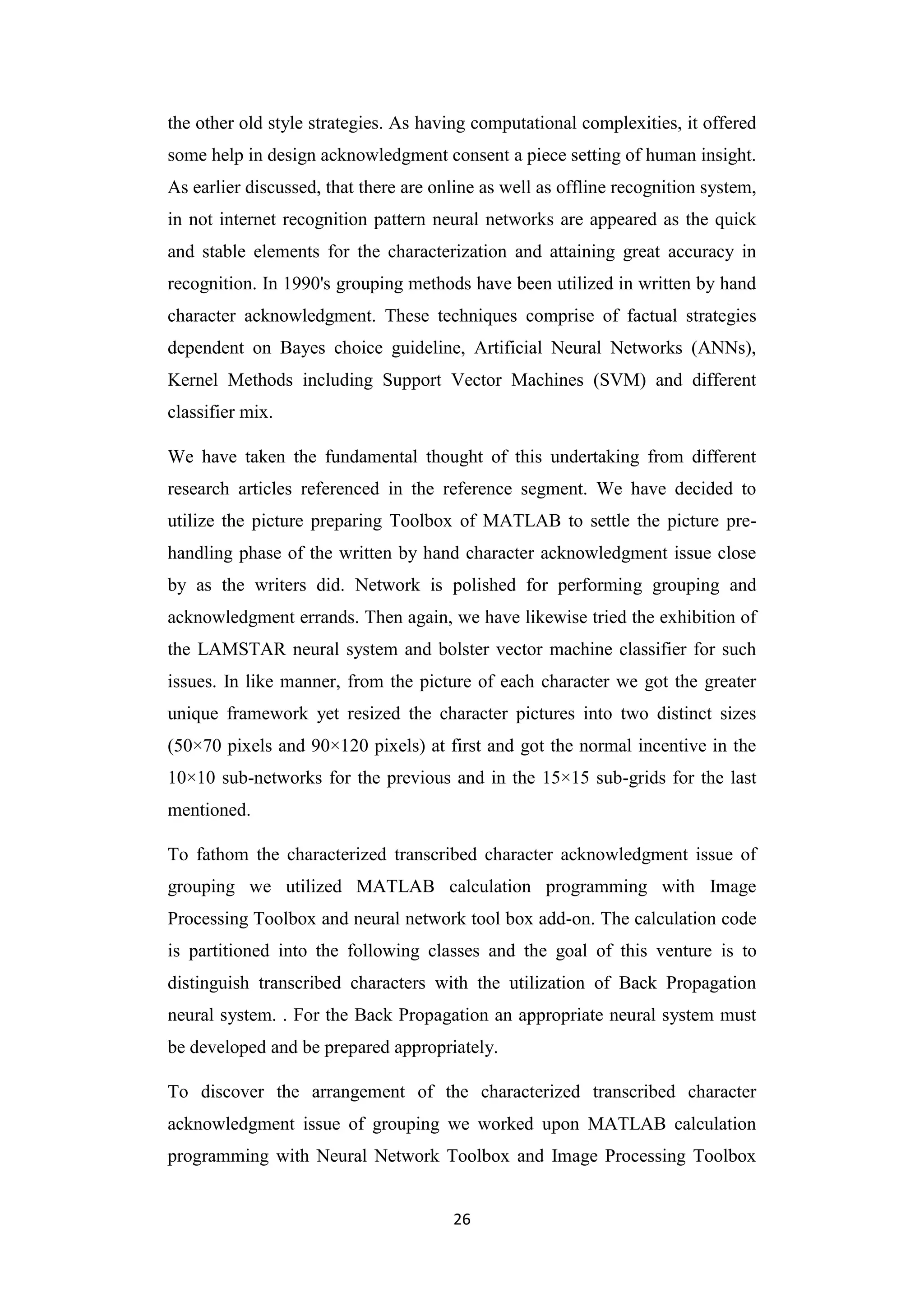
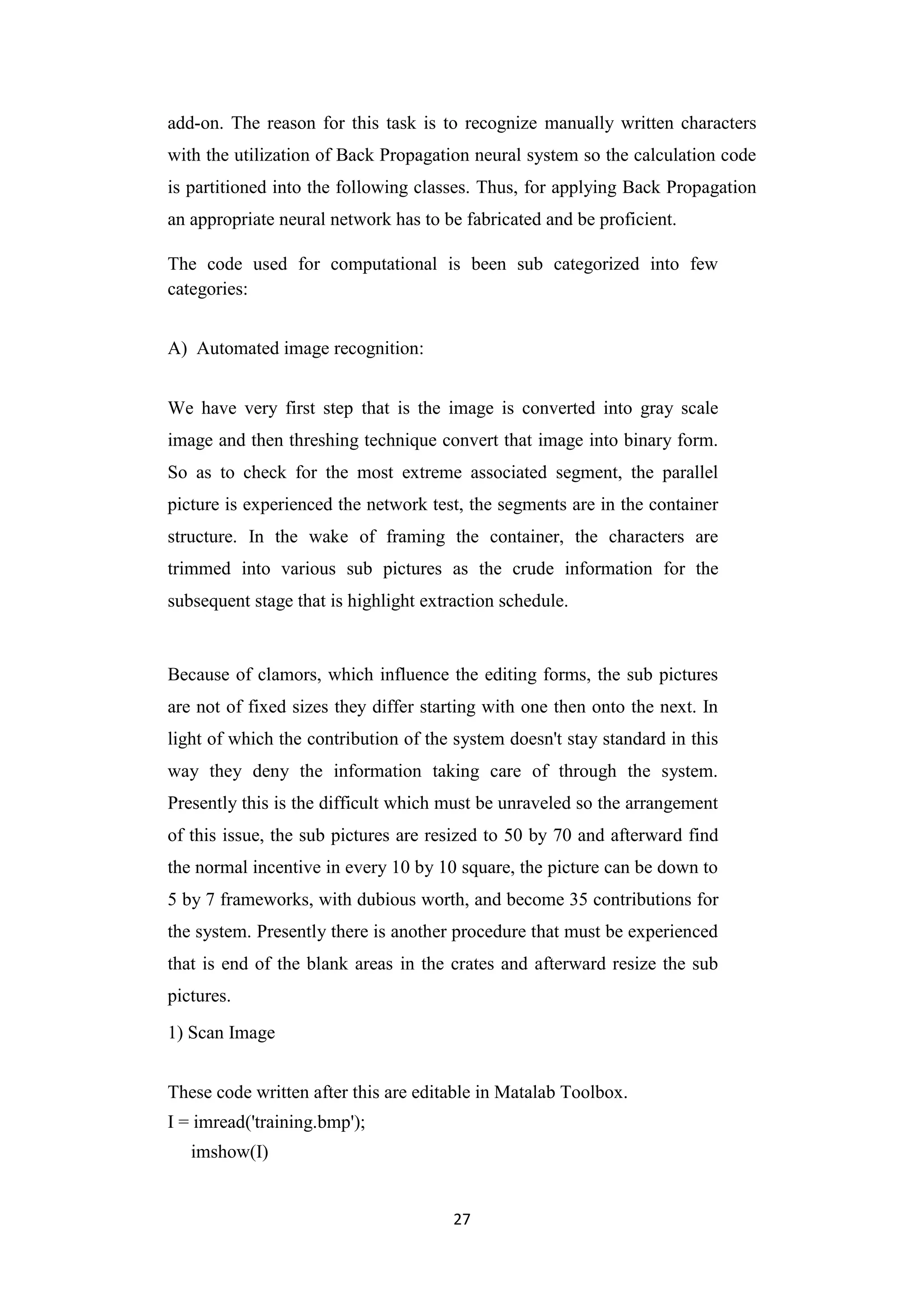

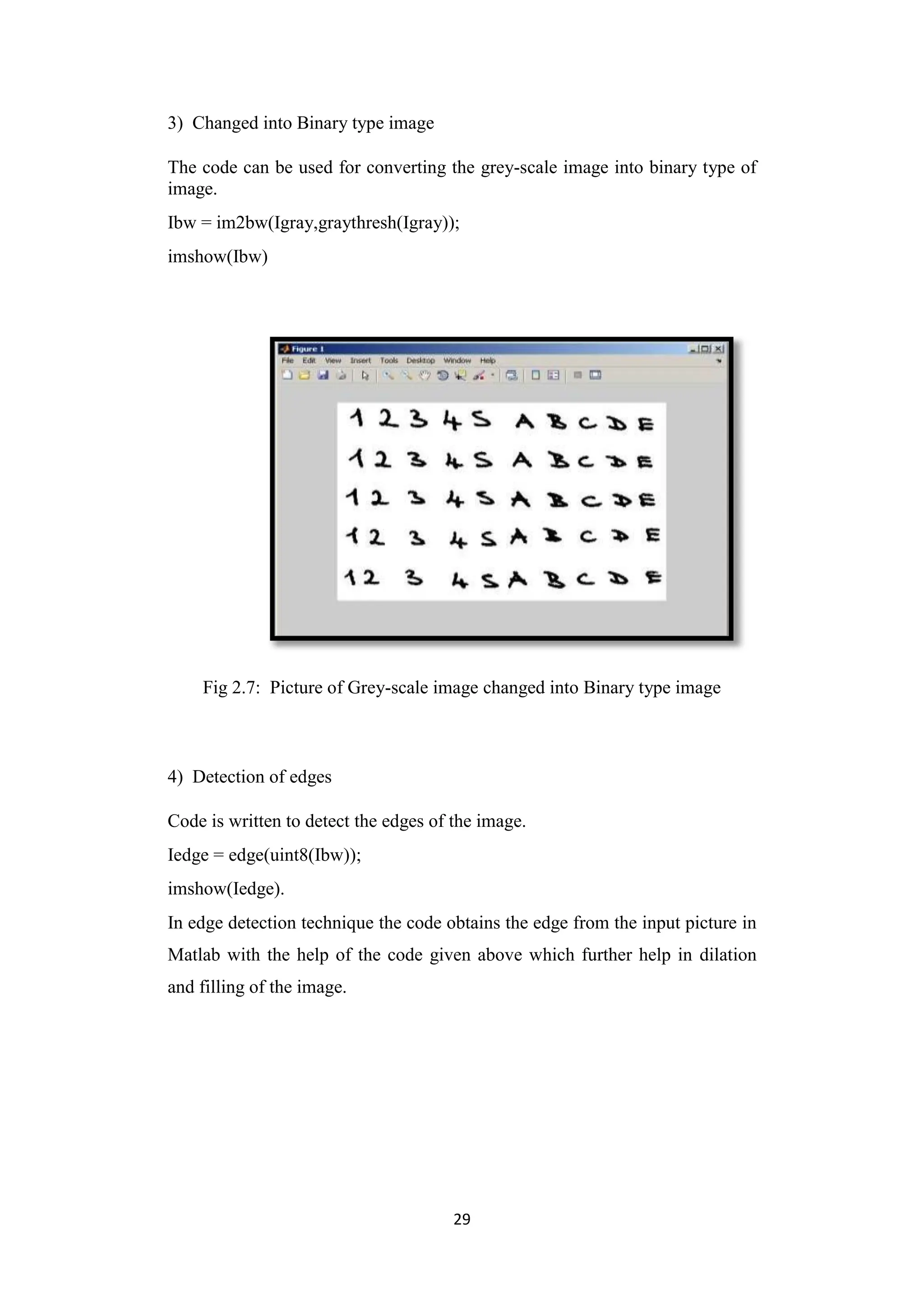
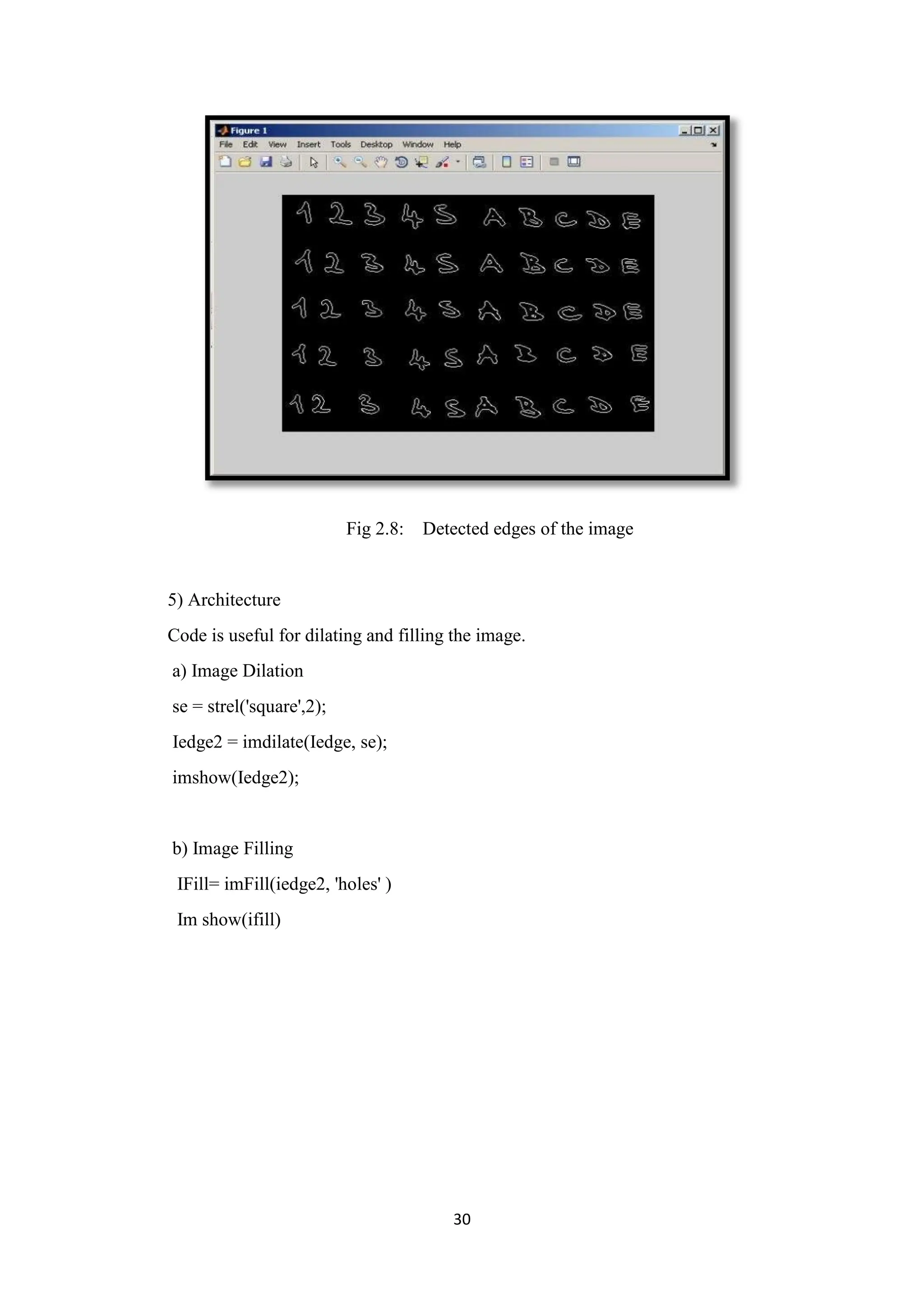
![31
Fig 2.9: Picture after dilation and filling
6) Blobs analysis
Blob analysis contains the code from which it can find the object situated in
image and find out the characteristics of the objects.
ilabel num = bWLabel(iFill);
disp (num)
iprops = regionprops(ilabel)
ibox = ipropsBounding.Box;
ibox = reshape(Ibox[4 50]) imshow(i)
7) To find the Location of the object
Code can find out the locations of object which are situated in image
hold on
for Cnt = 1 : 50;
rectangle(position,ibox(cnt),'edge color','r')
end](https://image.slidesharecdn.com/opticalcharacterrecognition1-240330184841-07a77147/75/Optical-Character-Recognition-deep-learning-pdf-39-2048.jpg)
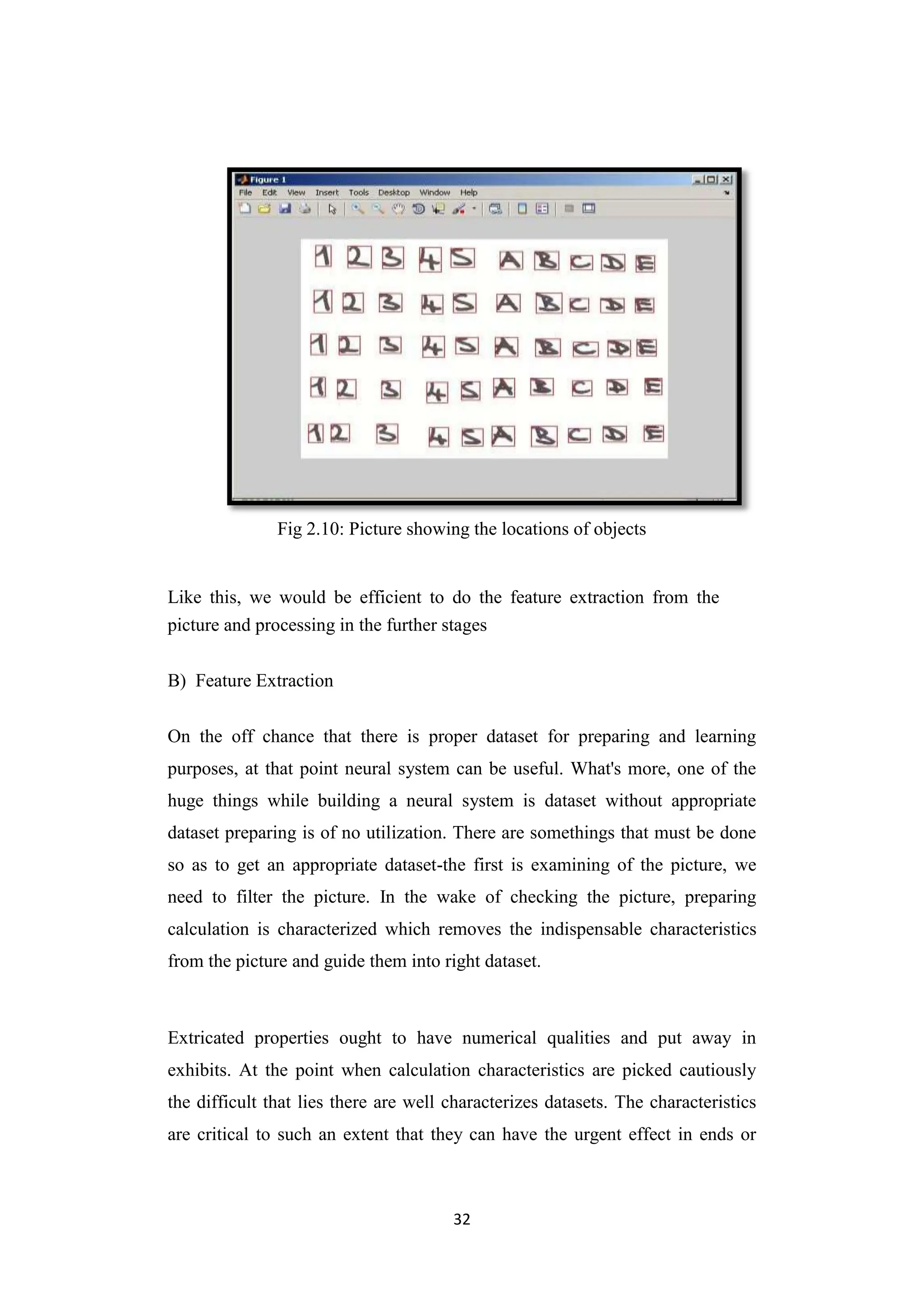
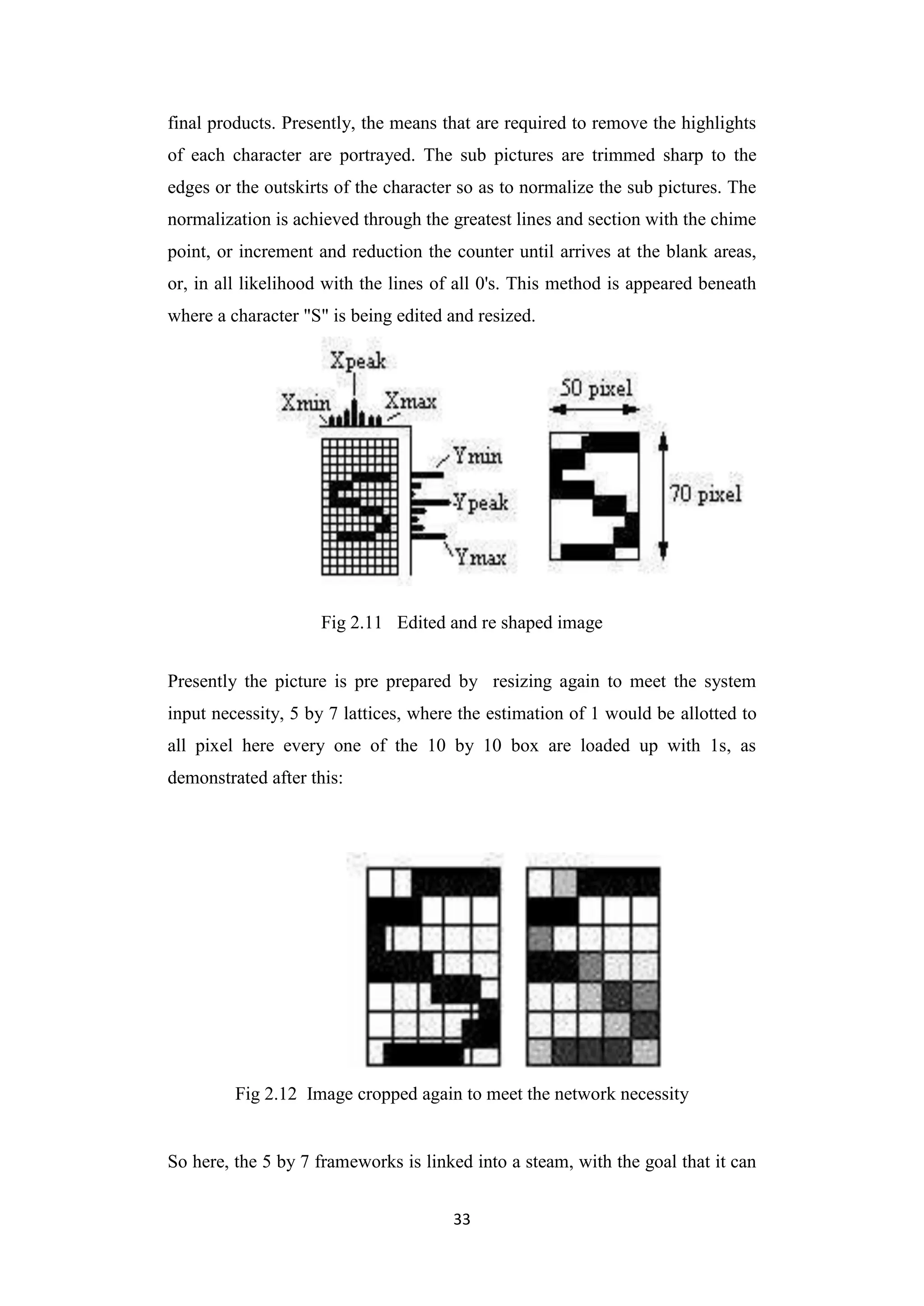
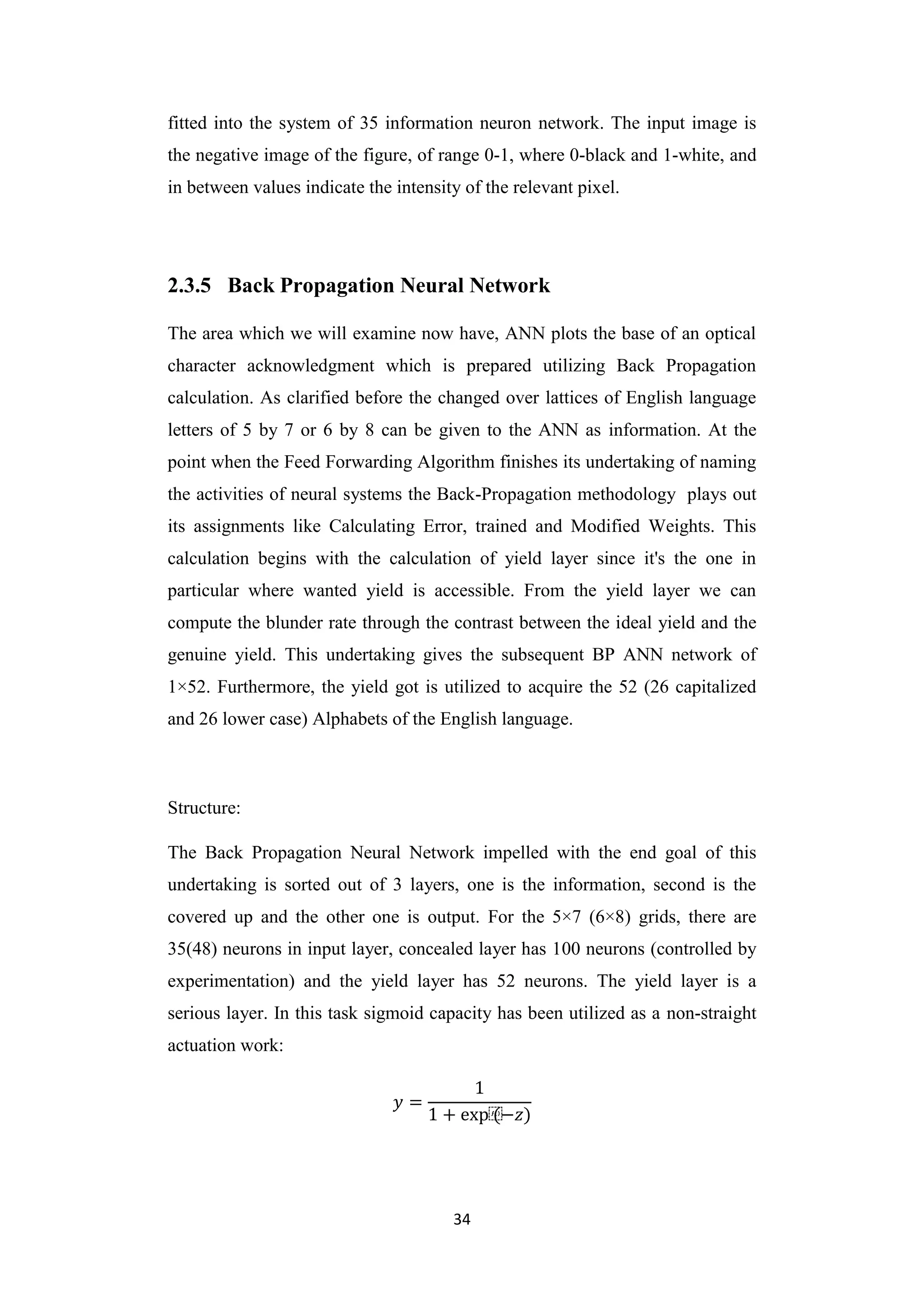
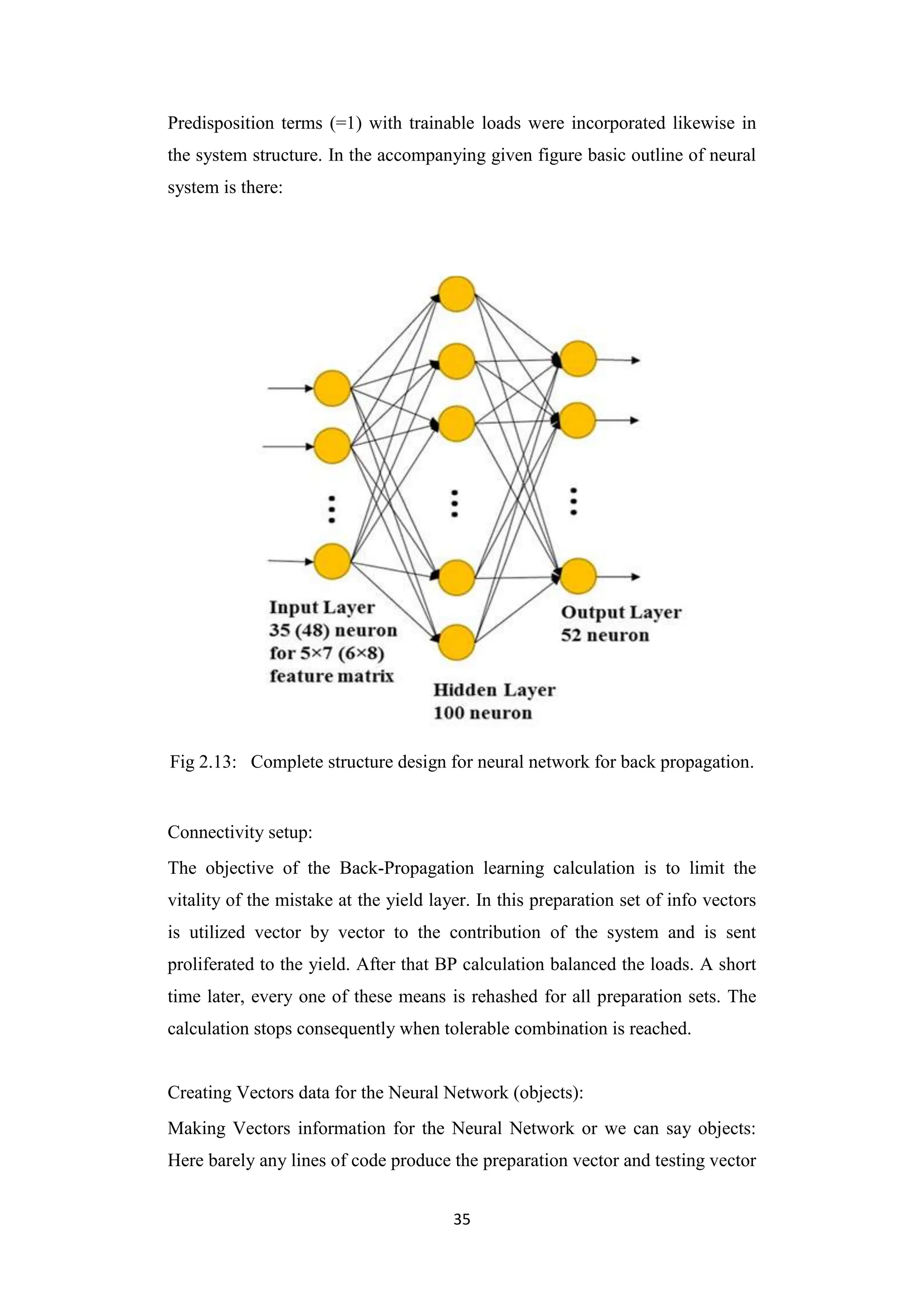
![36
for the neural system. This is simply to coordinate the information
acknowledged by the neural system work. The front four lines will be utilized
to prepare the system while the last column will be utilized to compute the
presentation of the system. p = out (1:40)
t = eye(10) eye(10) eye(10) eye(10)
Ptest = out(:,41:50);
Training algorithm of the network:
This part makes and prepares the neural system (NN). The edu_createn is a
capacity record to make and train the system by tolerating the preparation
target datasets. In any case, there is some issue identified with the nature, we
utilized feed forward back spread neural system for grouping or probably we
can say that, we were exploring different avenues regarding multi-layer
perceptron (MLP). Following is the image of MLP structure with 2 shrouded
Training the network by using the function data set = edu_createn (t,p)
We can also experiment and test the network separatly
net = newf(t,p,[35], {'logsig'})
Fnc = 'sse' net.divideinder.trainRatio = 1
net.divideinder.valRatio = 0;
net.divideinder.testRatio = 0;
net.traininder.goal = 0.001;
[net,tr,z,u] = train(net,t,p);](https://image.slidesharecdn.com/opticalcharacterrecognition1-240330184841-07a77147/75/Optical-Character-Recognition-deep-learning-pdf-44-2048.jpg)
![37
Fig 2.14: Training the Neural Networks
To test the network made:
We have to give a sim command to test and simulate the testing dataset.
Neural network system test
[a,b]=max(sim(net,itest)); disp(b);
% Result
1 2 3 4 5 6 7 8 9 10.
Encode/Decode](https://image.slidesharecdn.com/opticalcharacterrecognition1-240330184841-07a77147/75/Optical-Character-Recognition-deep-learning-pdf-45-2048.jpg)
![38
In our acknowledgment framework we can utilize or prepare the system with
ten unique signs or characters. Suppose there are five numbers and five
characters, so input lattice is a size of one by ten and
[1,2,3,4,5,'A','B','C','D','E'] values.
Yet, we cannot characterize arrange focus as a character so we need to utilize
numbers. So at the yield of the neural system we get grid with values [
1,2,3,4,5,6,7,8,9,0 ] rather than above given estimations of info framework.
This is the motivation behind why we need to encode and translate the yield of
our application. The encoding is made with basic code table, in which each
record gets another worth. So file 0 gets character E, list 6 gets A, record 3
gets 3, etc. Consummation this with the encoding code underneath.
if num<5
num = num 5;
charset = ['A','B','C','D','E'];
else
charset = [1,2,3,4,5]
end
num = charset(1,num)
set(handles.edit.result,'string',num)
User face and application purpose:
Characters acknowledgment application can be utilized in couple of
unmistakable manners in the principal way you can type each order inside the
Matlab comfort and working environment close by and in the other manner
you simply use as of now pre-arranged Graphical User Interface. The GUI
comprises of two records further so the principal document incorporates all
vital programming code, and the other record incorporate obvious interface
shapes and structures. The interface works like the work process of
acknowledgment process. Right off the bat we transfer the picture, at that
point we select the character and after that we click crop, pre-process, and](https://image.slidesharecdn.com/opticalcharacterrecognition1-240330184841-07a77147/75/Optical-Character-Recognition-deep-learning-pdf-46-2048.jpg)
